Forums
- Forums
- Duggy's Reference Hangar
- USAAF / USN Library
- The Memphis Belle
The Memphis Belle
Post a reply
- Go to Previous topic
- Go to Next topic
- Go to Welcome
- Go to Introduce Yourself
- Go to General Discussion
- Go to Screenshots, Images and Videos
- Go to Off topic
- Go to Works in Progress
- Go to Skinning Tips / Tutorials
- Go to Skin Requests
- Go to IJAAF Library
- Go to Luftwaffe Library
- Go to RAF Library
- Go to USAAF / USN Library
- Go to Misc Library
- Go to The Ops Room
- Go to Made in Germany
- Go to Campaigns and Missions
- Go to Works in Progress
- Go to Juri's Air-Raid Shelter
- Go to Campaigns and Missions
- Go to Works in Progress
- Go to Skinpacks
- Go to External Projects Discussion
- Go to Books & Resources
-
9 years agoSat Dec 23 2023, 01:57pmDuggy
 Main AdminThe Memphis Belle was the nickname of a U.S. Army Air Force Boeing B-17F that flew strategic bombing missions from England into continental Europe. As part of the 324th Bomb Squadron of the 91st Bomb Group, the plane flew 25 operational missions between November 1942 and May 1943, returning from all missions with its crew intact.
Main AdminThe Memphis Belle was the nickname of a U.S. Army Air Force Boeing B-17F that flew strategic bombing missions from England into continental Europe. As part of the 324th Bomb Squadron of the 91st Bomb Group, the plane flew 25 operational missions between November 1942 and May 1943, returning from all missions with its crew intact.
Most of the plane?s missions were flown by the same crew, but a few were not. Conversely, the plane?s usual crew, headed by Captain Robert K. Morgan, flew several missions in other B-17s. According to the 324th Bomber Squadron mission reports, the plane?s usual crew flew their 25th mission on May 17th, 1943, piloting the Memphis Belle to the Keroman submarine base, located in the Breton city of Lorient. There they bombed a platform used to pull U-boats out of the water. However, the aircraft itself did not complete its 25th mission until its next flight. That flight, manned by a different crew than its usual one, occurred on May 19th and sent the Memphis Belle to the Kilian submarine pen and bunker at Kiel, Germany. Its mission was to bomb an engineering and turbine engine workshop.
So, the 25th mission of the crew occurred two days before the 25th mission of the aircraft, which may account for some of the confusion about the ?last mission.? After both crew and plane completed their respective 25th mission, the crew received the Air Medal with three Oak Leaf Clusters and the Distinguished Flying Cross. They were then ordered in June to fly the Memphis Belle back to the United States for a cross-country tour, the aim of which was to increase morale back home and to sell War Bonds.
The commanders who directed the bombing raids on Europe had decided to limit a crew?s tour of duty to 25 missions in order to increase morale among the crews: Casualty rates at the beginning of the missions approached 80% and when the Memphis Belle completed its tour (the first heavy bomber to do so), it was a joyful event, not only for the crew, but also for the entire air command and the American public.
To mark the event, American filmmaker William Wyler (then a Major in the U.S. Army Air Force) filmed and produced a 1944 documentary for the War Department entitled Memphis Belle: A Story of a Flying Fortress. In 1990, Wyler?s daughter Catherine produced a fictionalized movie of the plane?s 25th operational mission, entitled Memphis Belle.
The Crew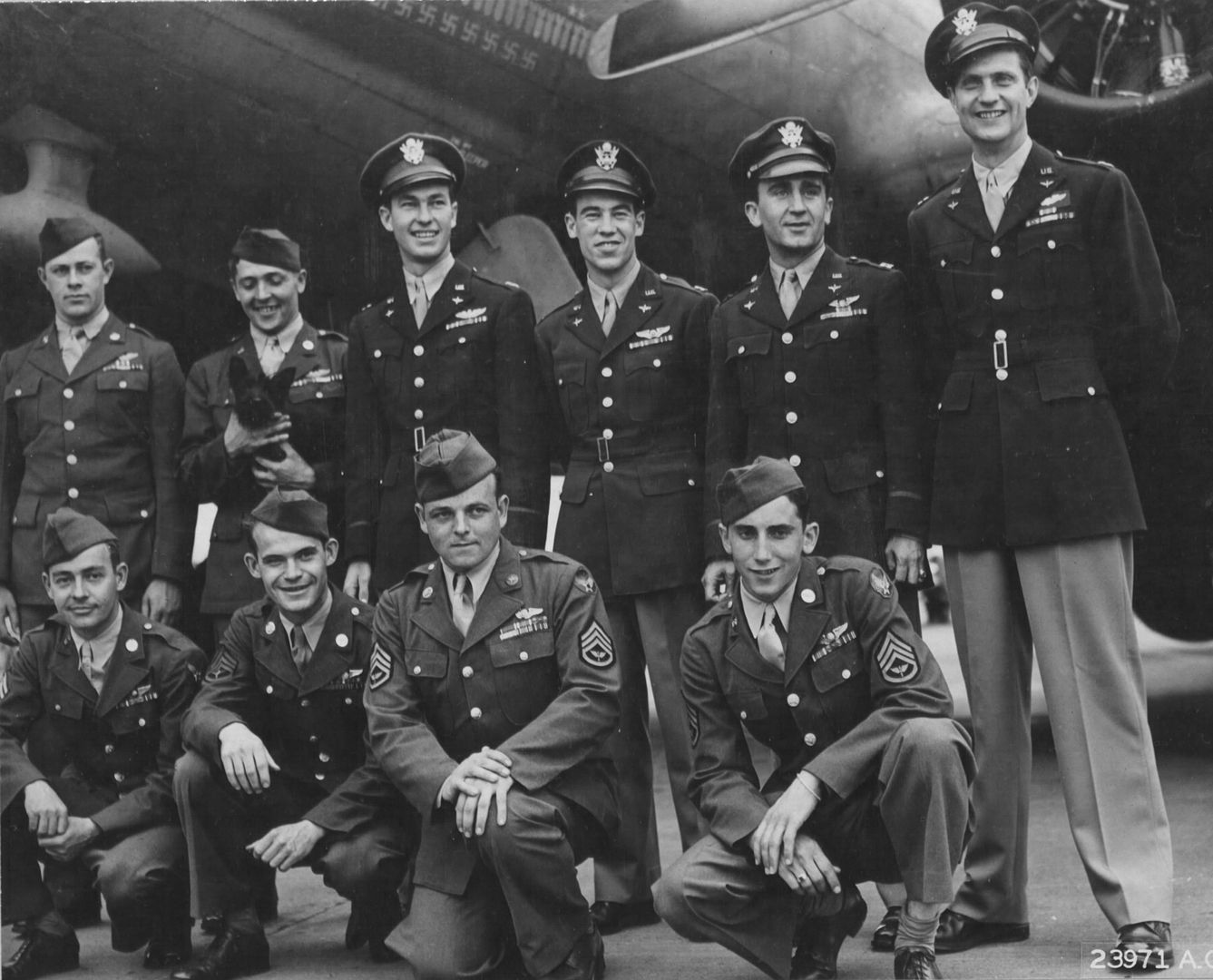
Harold Loch, Top Turret Gunner (Died 2004)
Cecil Scott, Ball Turret Gunner (Died 1979)
Robert Hanson, Radio Operator (Died 2005)
Jim Vernis, Co-Pilot (Died 2003)
Robert Morgan, Pilot (Died 2004)
Chuck Leighton, Navigator (Died 1991)
John Quinlan, Tail-Gunner (Died 2000)
Tony Nastal, Rt Waist Gunner (Died 2002)
Vince Evans, Bombardier (Died 1980)
Bill Winchell, Lt. Waist Gunner (Died 1994)
Joe Giambrone - Crew Chief (Died 1992) - Who replaced 9 engines, both wings, two tails, and both main landing gear.
Ms. Margaret Polk - The Memphis Belle (Died 1990)
Scotty Dog "Stuka" - Mascot
OTHER PEOPLE WHO FLEW MISSIONS IN THE BELLE
Levi Dillon, 1st Top Turret Gunner. Flew four missions. (Died 1998)
Eugene Adkins, 2nd Top Turret Gunner, Flew six missions. Hands froze on 6th mission. (Died 1995)
E. Scott Miller, Right Waist Gunner, Flew 15 Missions. (Died 1995)
The BELLE shot down eight enemy fighters, probably destroyed five others, and damaged at least a dozen more. She dropped more than 60 tons of bombs over Germany, France and Belgium. During her 25 missions she flew 148 hours, 50 minutes, and covered more than 20,000 combat miles. She is the only B-17 to have her own file in the Air Force Film Depository.
This gallant lady was bullet-ridden, flak damaged; on five separate occasions had engines shot out and once came back with her tail nearly shot off. There was not one major injury to the crew members. The crew met their plane in Bangor, Maine for the first time in September, 1942. They flew their ship to Memphis, TN on a shakedown flight, where
she was christened MEMPHIS BELLE in honor of the pilot's wartime sweetheart, Ms. Margaret Polk. From there they flew across the Atlantic to their home base in Bassingbourn, England, just north of London. Bassingbourn is still an active English army base today.
The 26th mission of the BELLE was to return to the States during the summer of 1943 on a public relations tour to thank the American public for supporting the war effort. The crew visited more than 32 cities where they received a heroes' welcome. Their mascot, a Scotty dog named "Stuka", traveled across the Atlantic with them and participated in the PR tour.
The noseart was painted on the Belle by Cpl. Tony Starcer. The famous logo was designed by the famous artist George Petty, who created a series of pin-up girls for Esquire Magazine know as the "Petty Girls". After the public relations tour, the Belle flew stateside in the training command. In 1945 she ended up in an aircraft boneyard in Altus, OK. An enterprising reporter saw her, wrote a story of her plight, and contacted the Mayor of Memphis. The City bought her for $350 and on July 17, 1946, she was flown home to Memphis.
In 1950 the Belle was placed on a pedestal near the Army National Guard. In November, 1977, she was moved to the Air National Guard at the Memphis airport. During these years the vandals did what the Germans couldn't. They almost destroyed her! For the next nine years various fund raising efforts were made to restore the Belle. After a relentless, last
ditch effort by Frank Donofrio, a local businessman, the City agreed to donate a piece on land on Mud Island, where the historic bomber could be displayed. Federal Express and Boeing each donated $100,000 toward her restoration and the City donated $150,000. When Hugh Downs of TV's 20/20 aired the need for more money, the American people rose to the challenge and donated the rest of the $576,000. The MEMPHIS BELLE was saved and restored to a place of honor.
B-17F Mary Ruth-Memories of Mobile and the 401st Bomb Squadron flying toward the German U-boat pens at Lorient France May 17 1943. This photo was taken from B-17 Memphis Belle on her last crews mission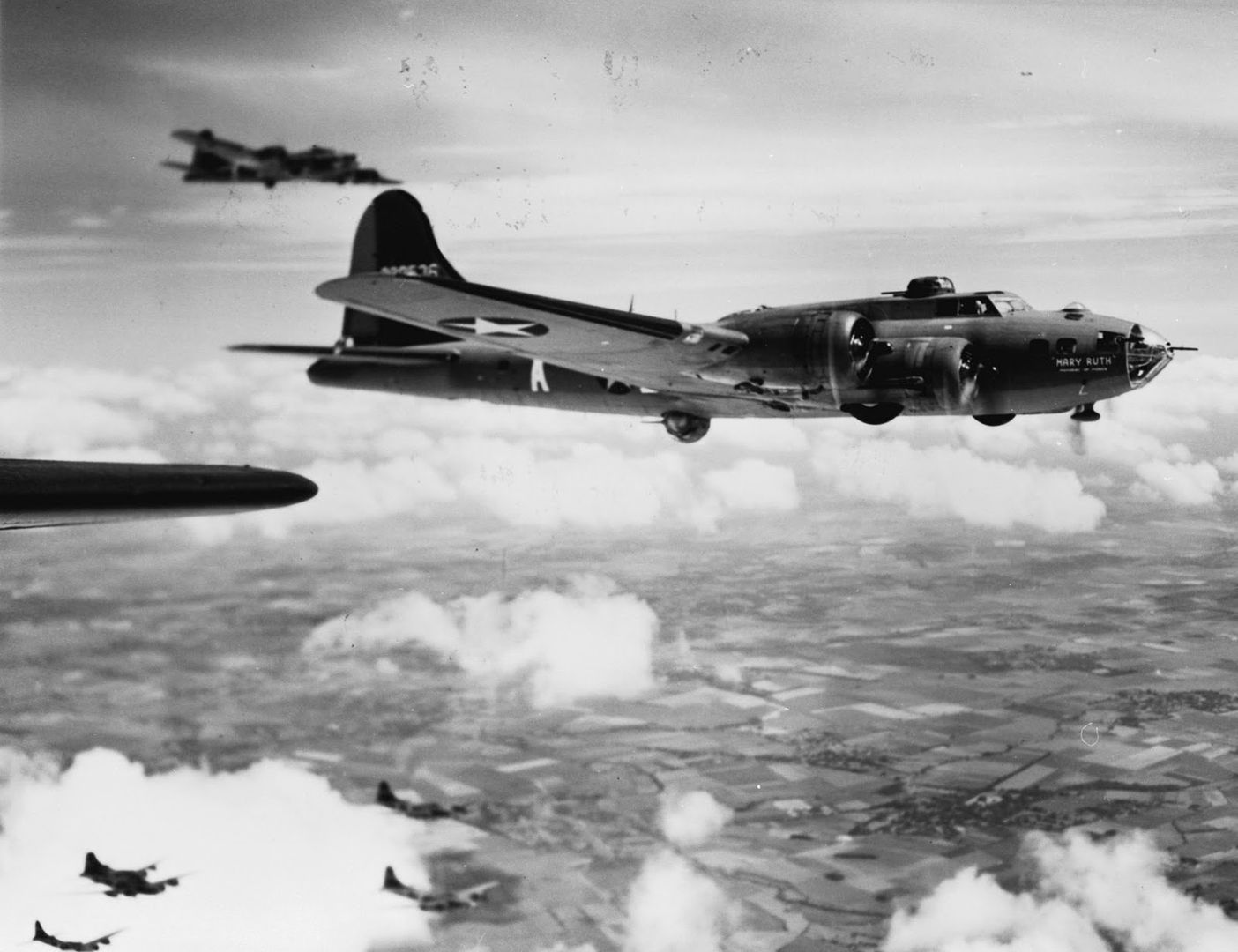
The crew of the Boeing B-17 "THE MEMPHIS BELLE" is pictured at an airbase in England after completing 25 missions over enemy territory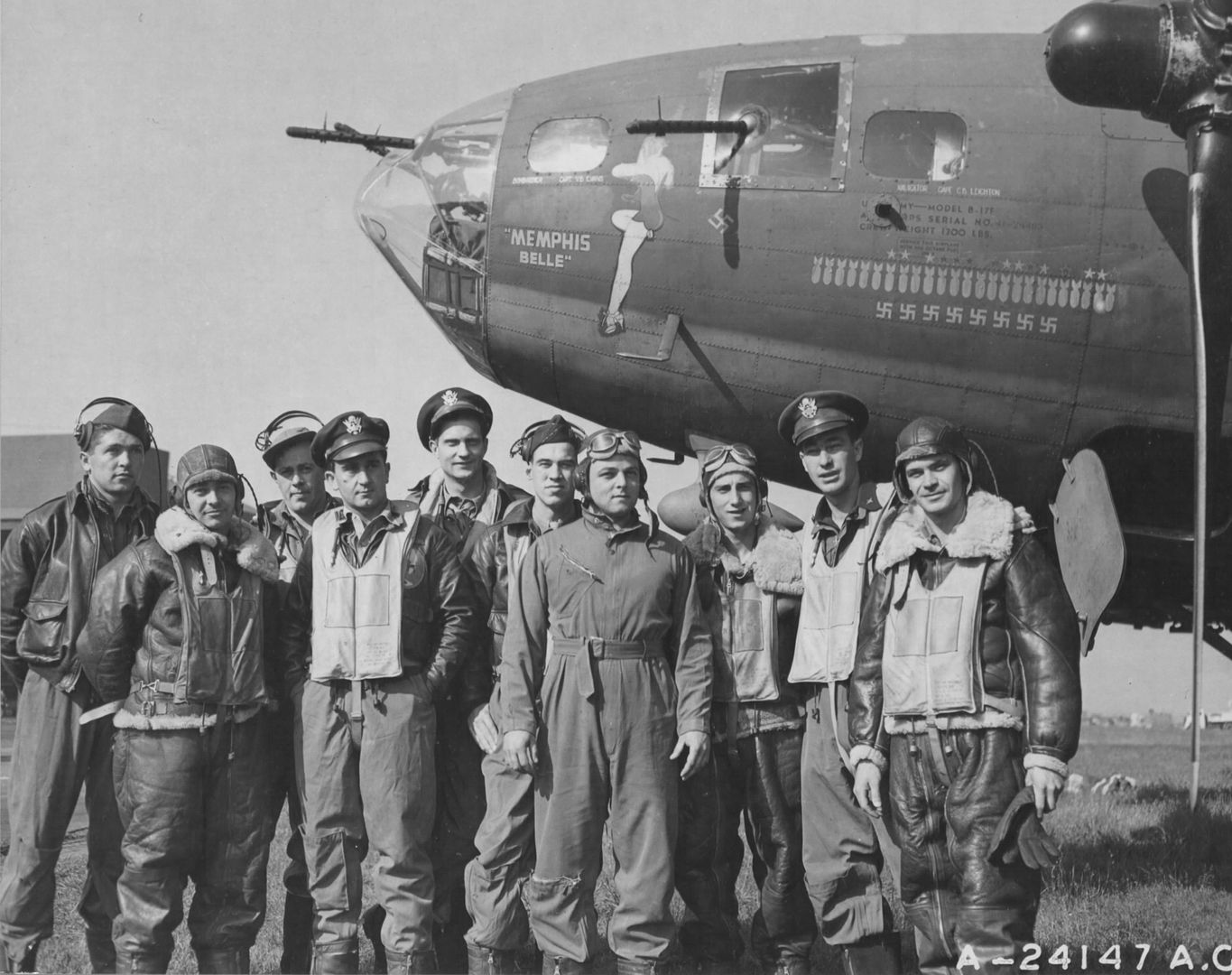
T-Sgt. Robert J. Hanson Of Walla Wall Washington Radio Operator On The Boeing B-17 The Memphis Belle Kissed The Good Earth After The Plane Successfully Completed Its 25Th Mission.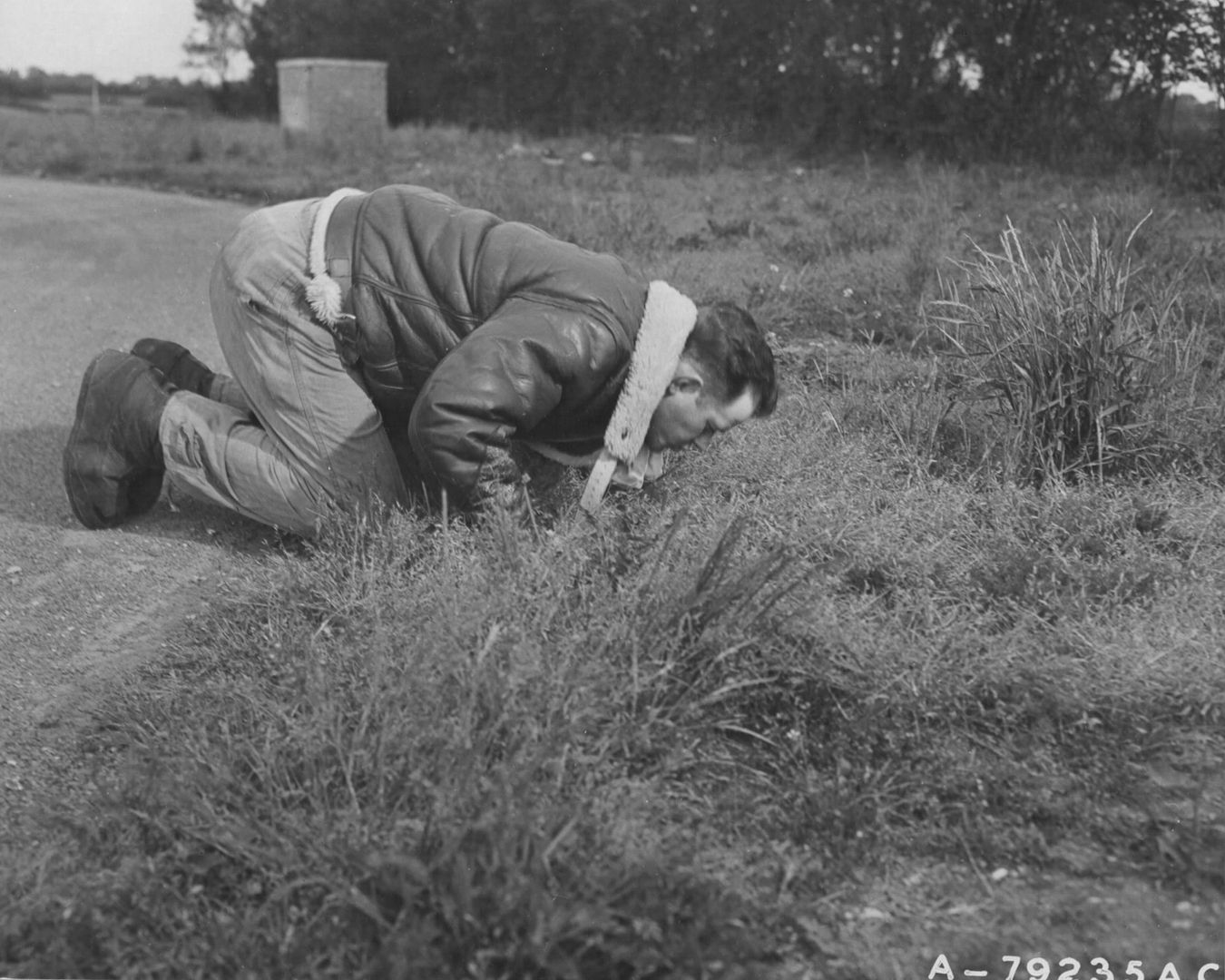
The Crew Of The Memphis Belle Back From Its 25Th Operational Mission.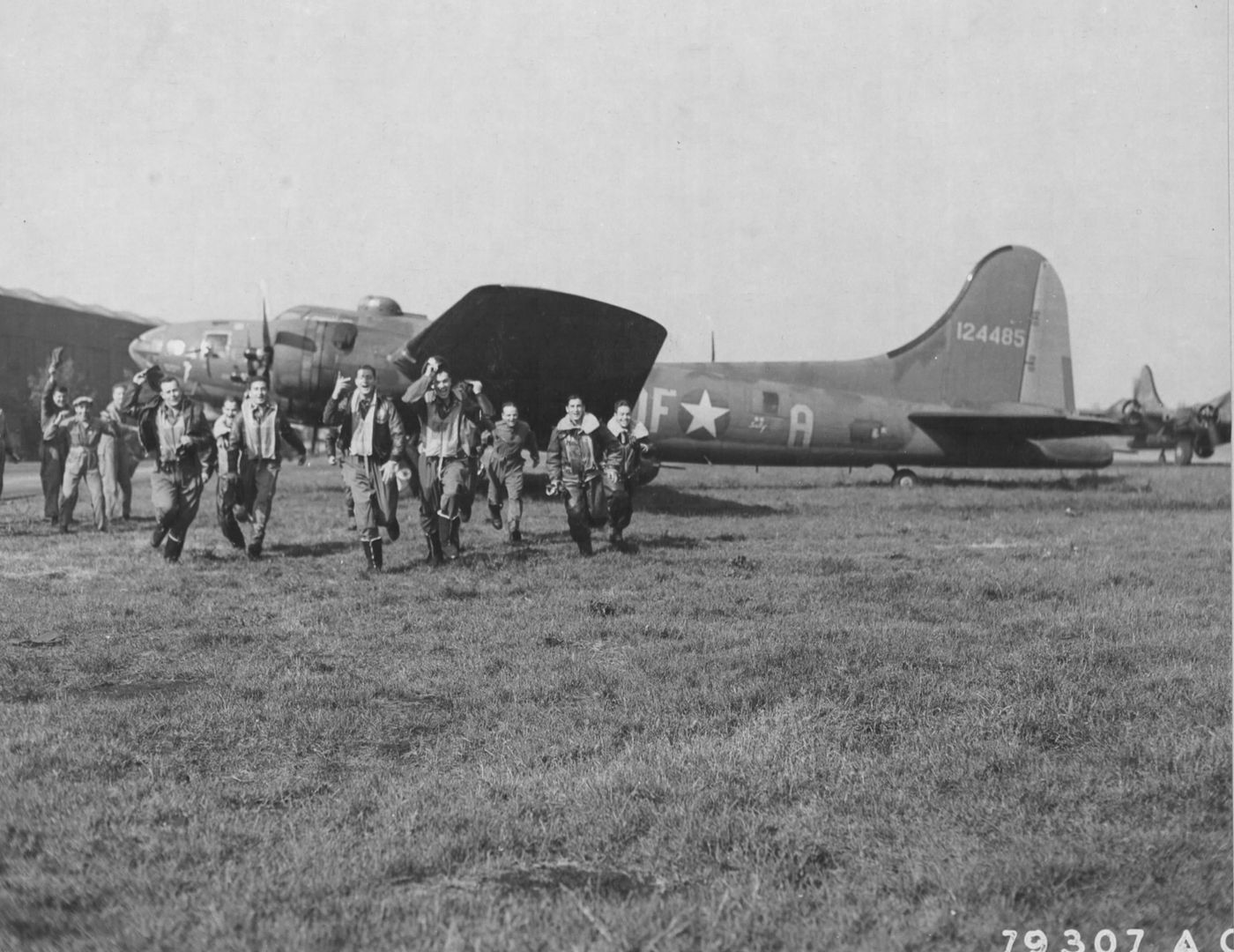
B-17F 41-24485 Memphis Belle 324th Bomb Sq 91st BG gets her tail repaired after battle damage.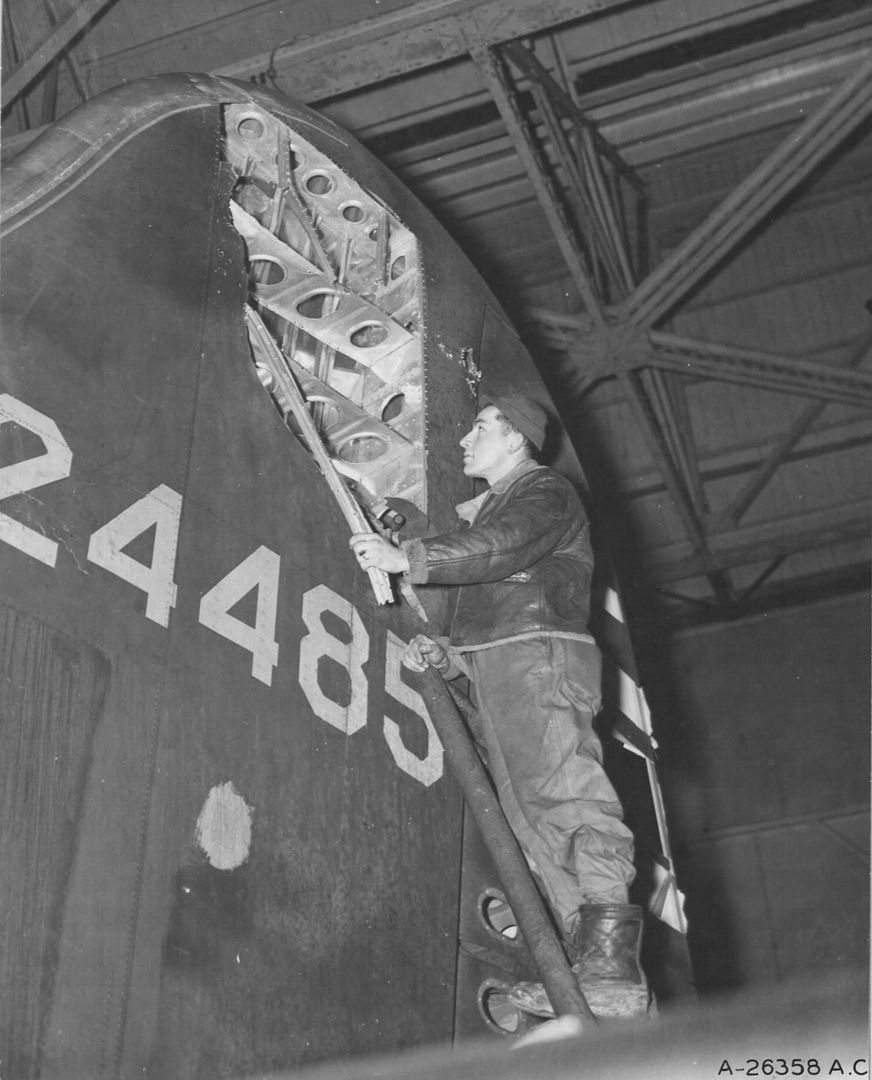
Major then Captain Robert K. Morgan of Biltmore Estates Asheville North Carolina flight officer of the Boeing B-17 Memphis Belle.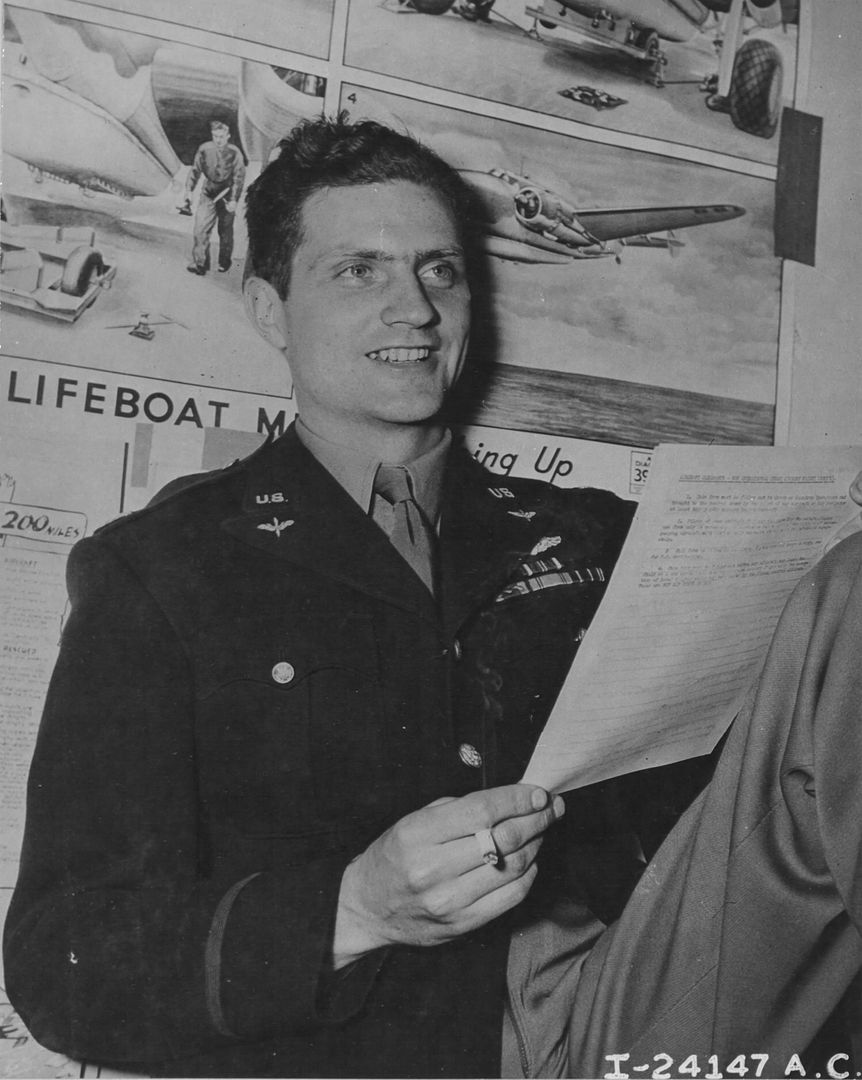
T-Sgt. Harold P. Loch engineer and top turret gunner on the Boeing B-17 Memphis Belle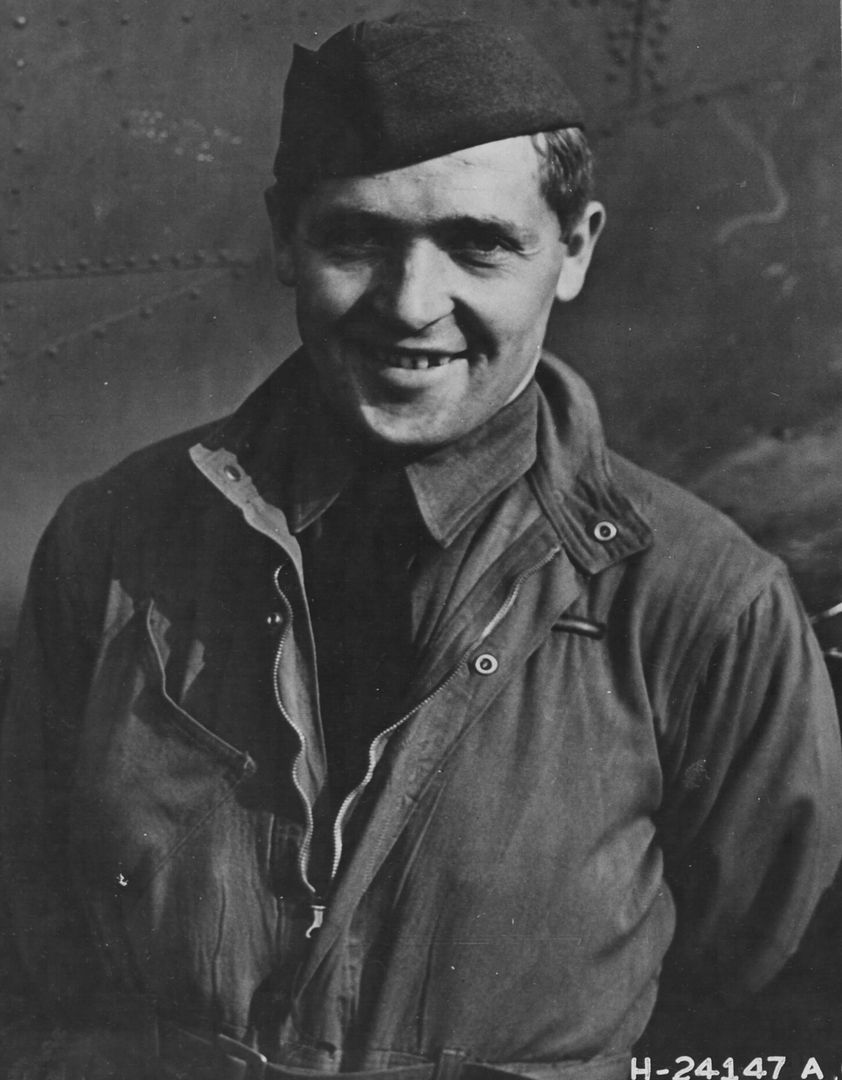
/S-Sgt. Clarence E. Winchell mans a waist gun on the Boeing B-17 Memphis Belle.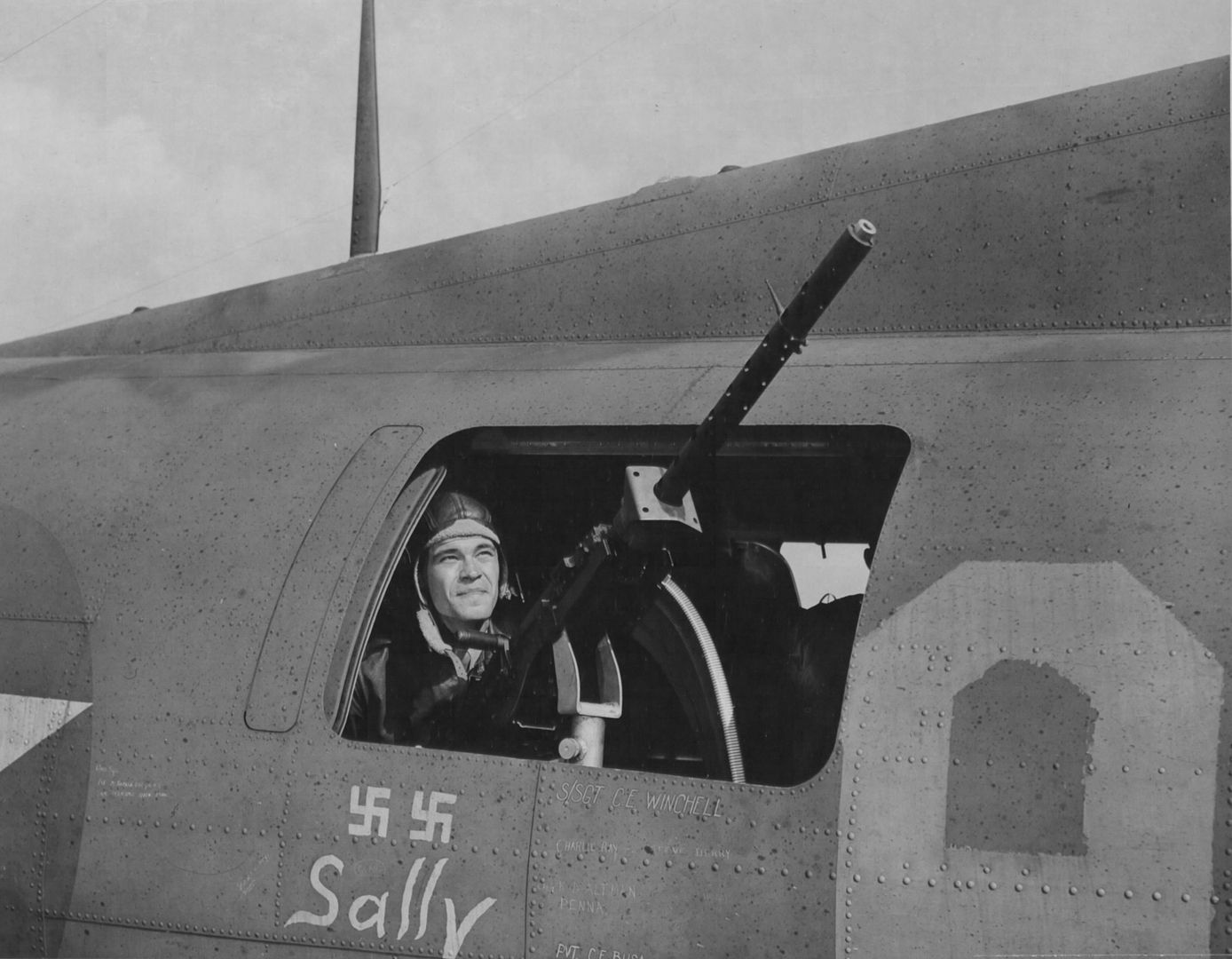
S-Sgt. John P. Quinlan tail gunner on the Boeing B-17 THE MEMPHIS BELLE holds the lucky horseshoe which has accompanied him on all 25 missions England 7 June 1943.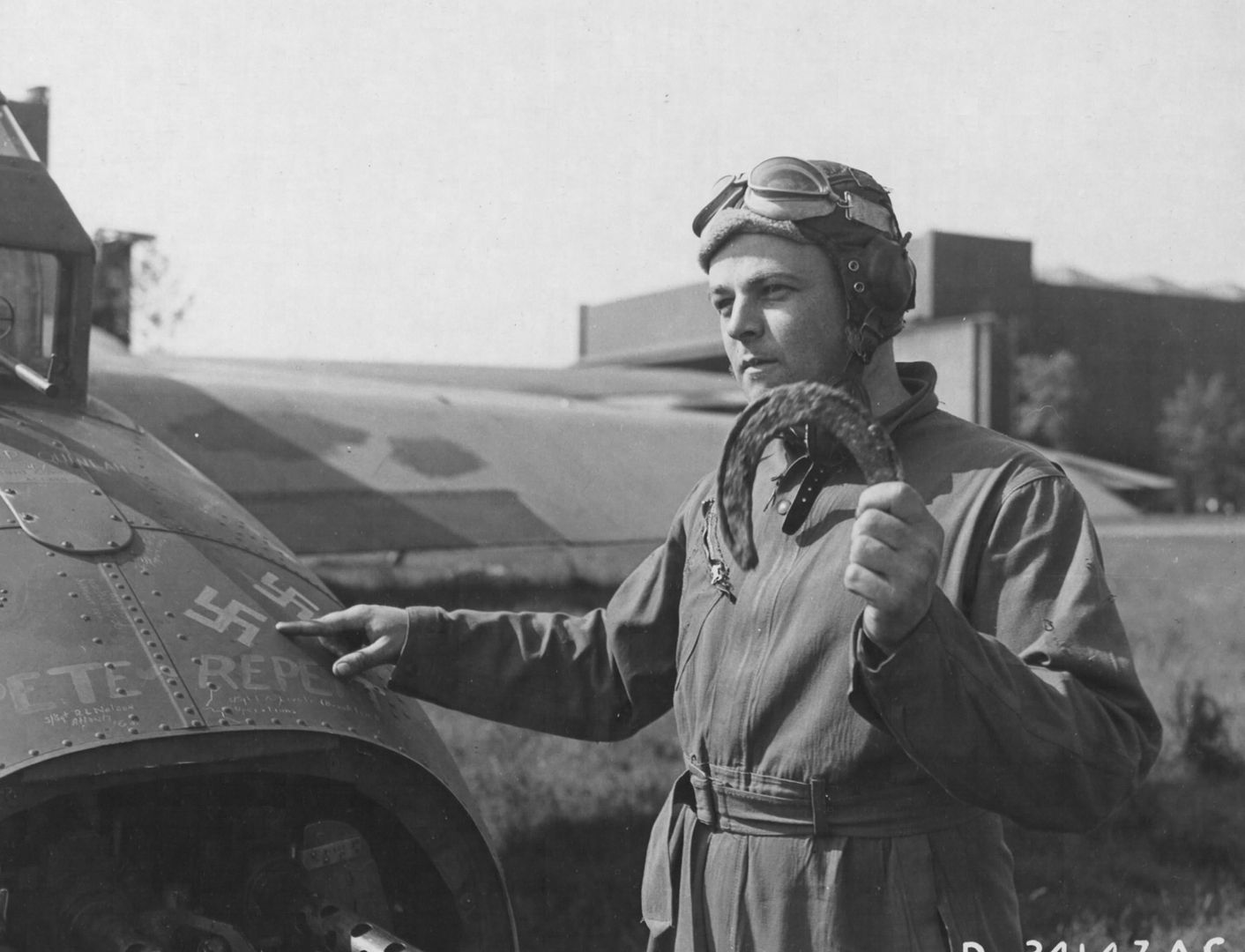
S-Sgt. Cecil H. Scott ball turret gunner on the Boeing B-17 Memphis Belle.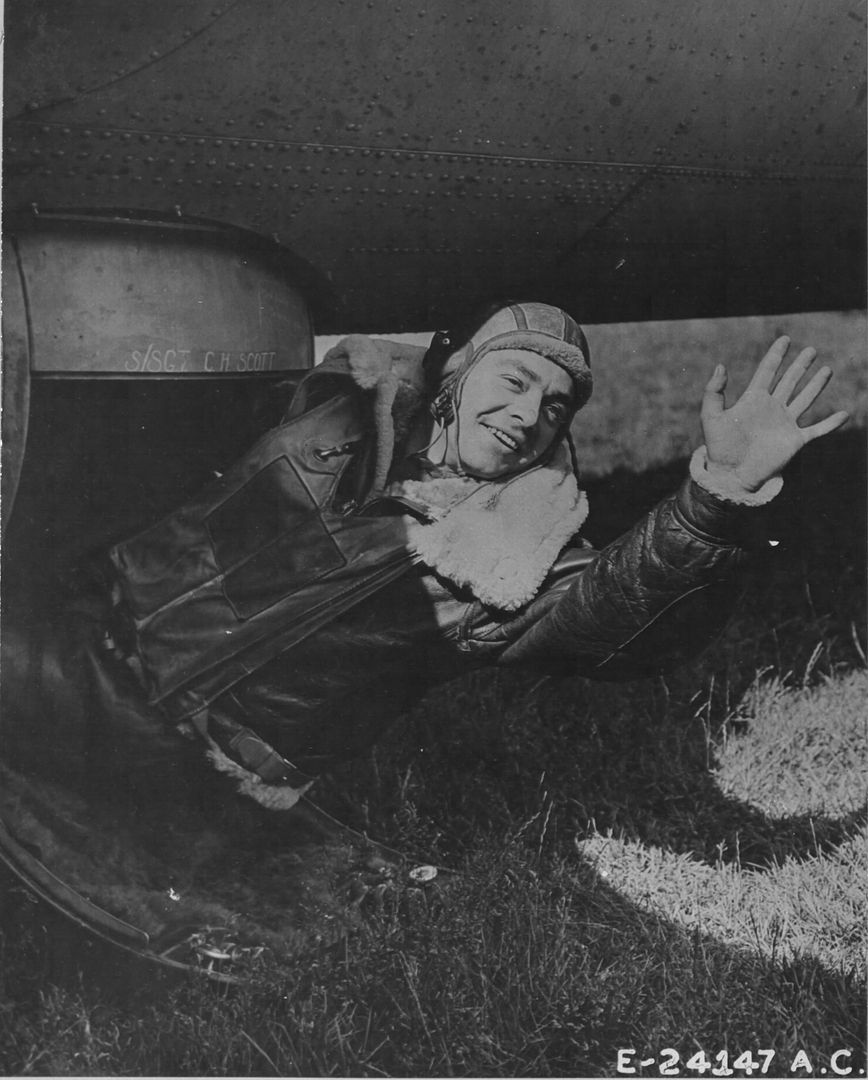
Technical Sergeant Robert J. Hanson a radio operator of the 91st Bomb Group in position inside his B-17 Flying Fortress serial number 41-24485 nicknamed The Memphis Belle.-26th May-43.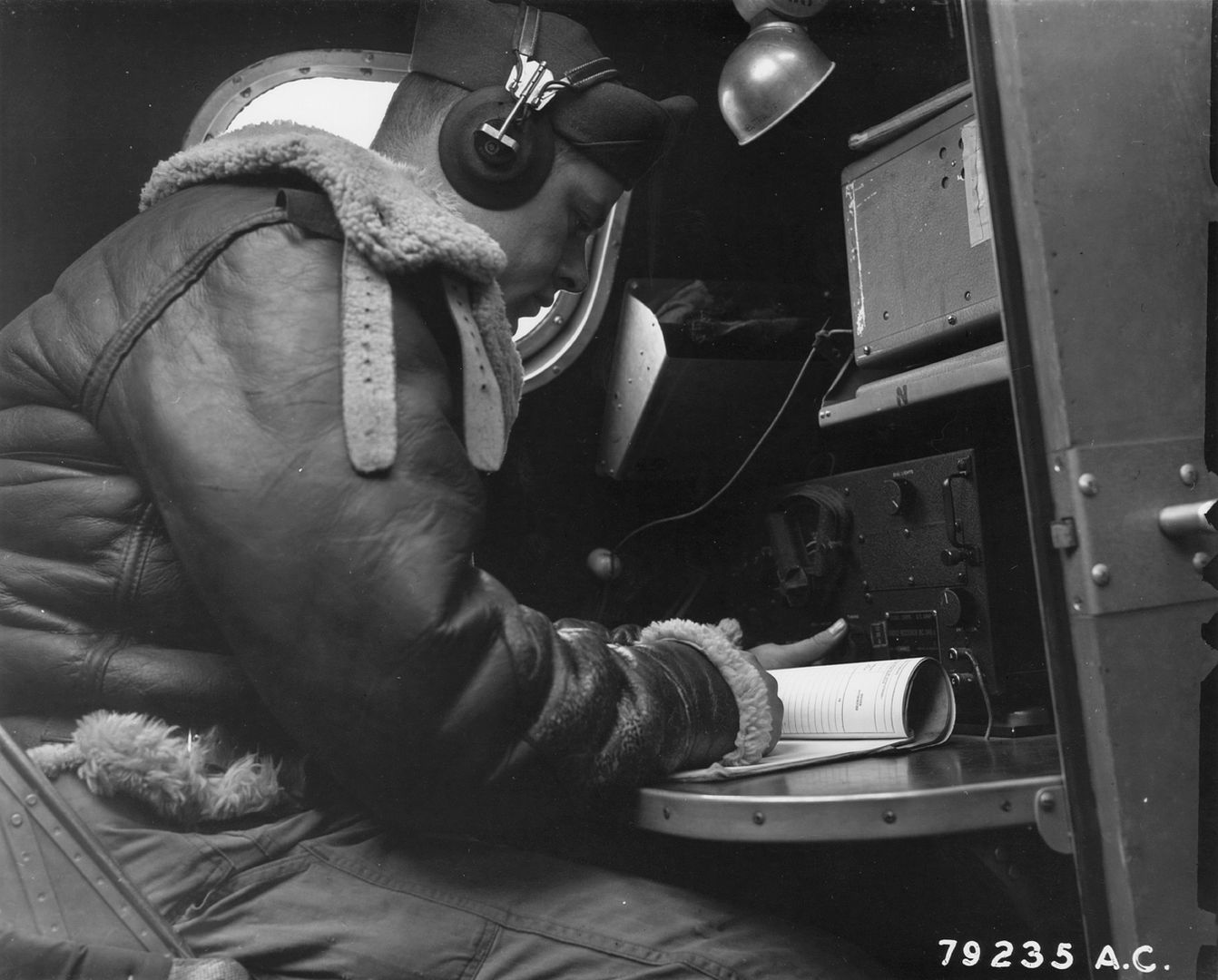
S-Sgt. Casimer A. Nastal mans a waist gun of the Boeing B-17 Memphis Belle.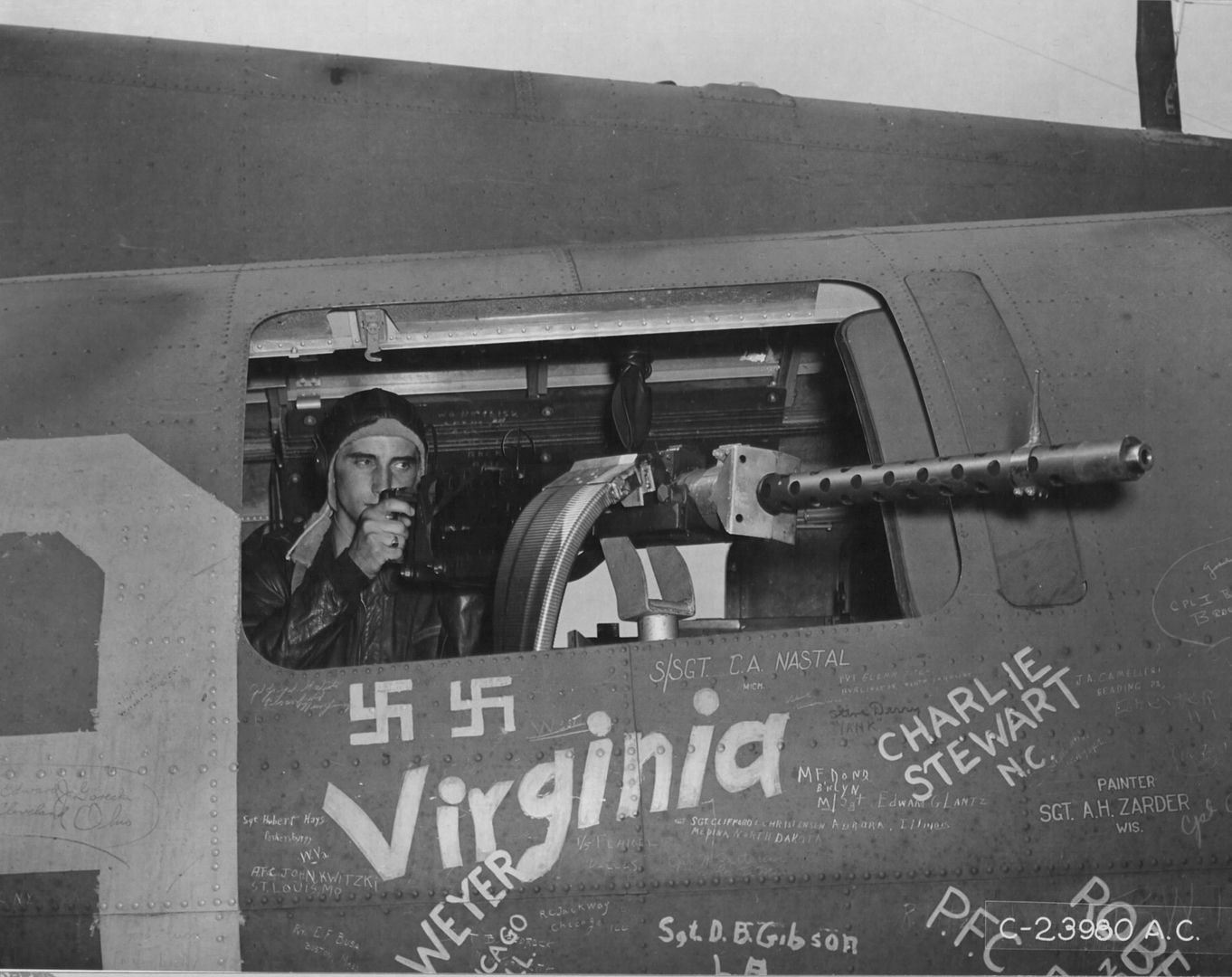
SSgt. Casimer Nastal of Detroit Michigan right and SSgt. Clarence E. Winchell of Oak Park Illinois gunners on the Boeing B-17 THE MEMPHIS BELLE shown at their positions after take-off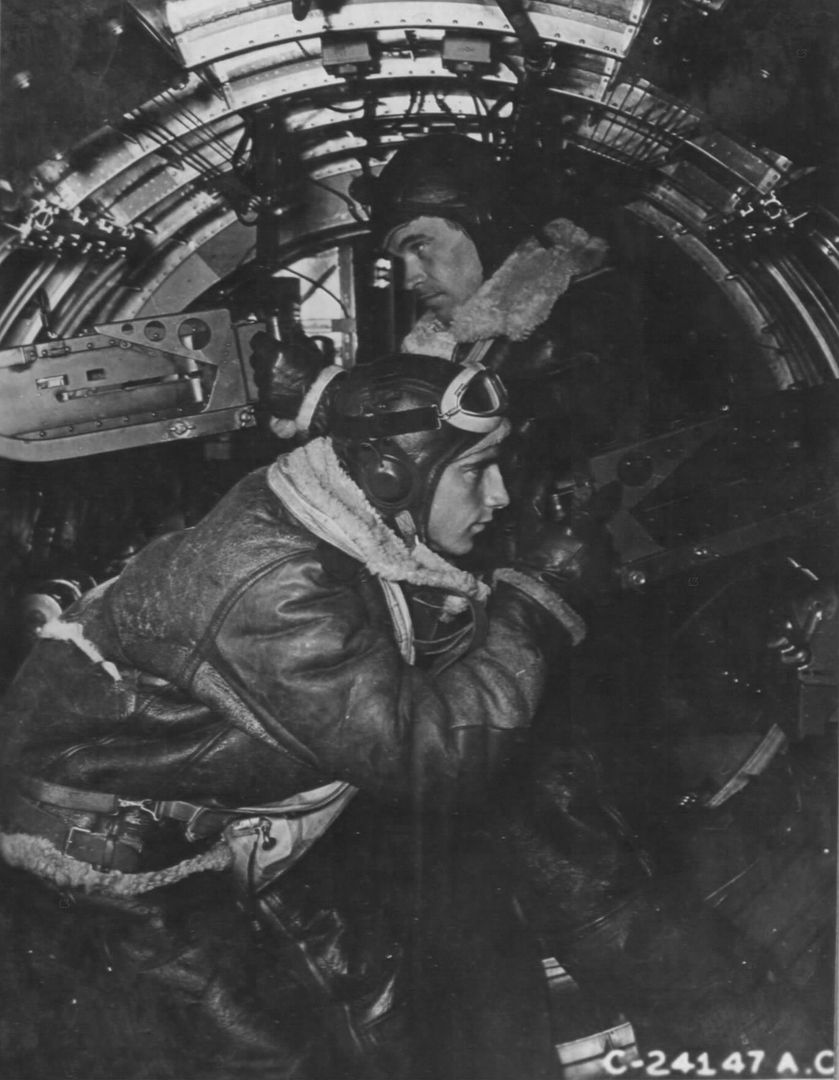
Hundreds Of Soldiers Scratched Their Names On The Boeing B-17 The Memphis Belle After She Had Completed Her 25Th Operational Flight.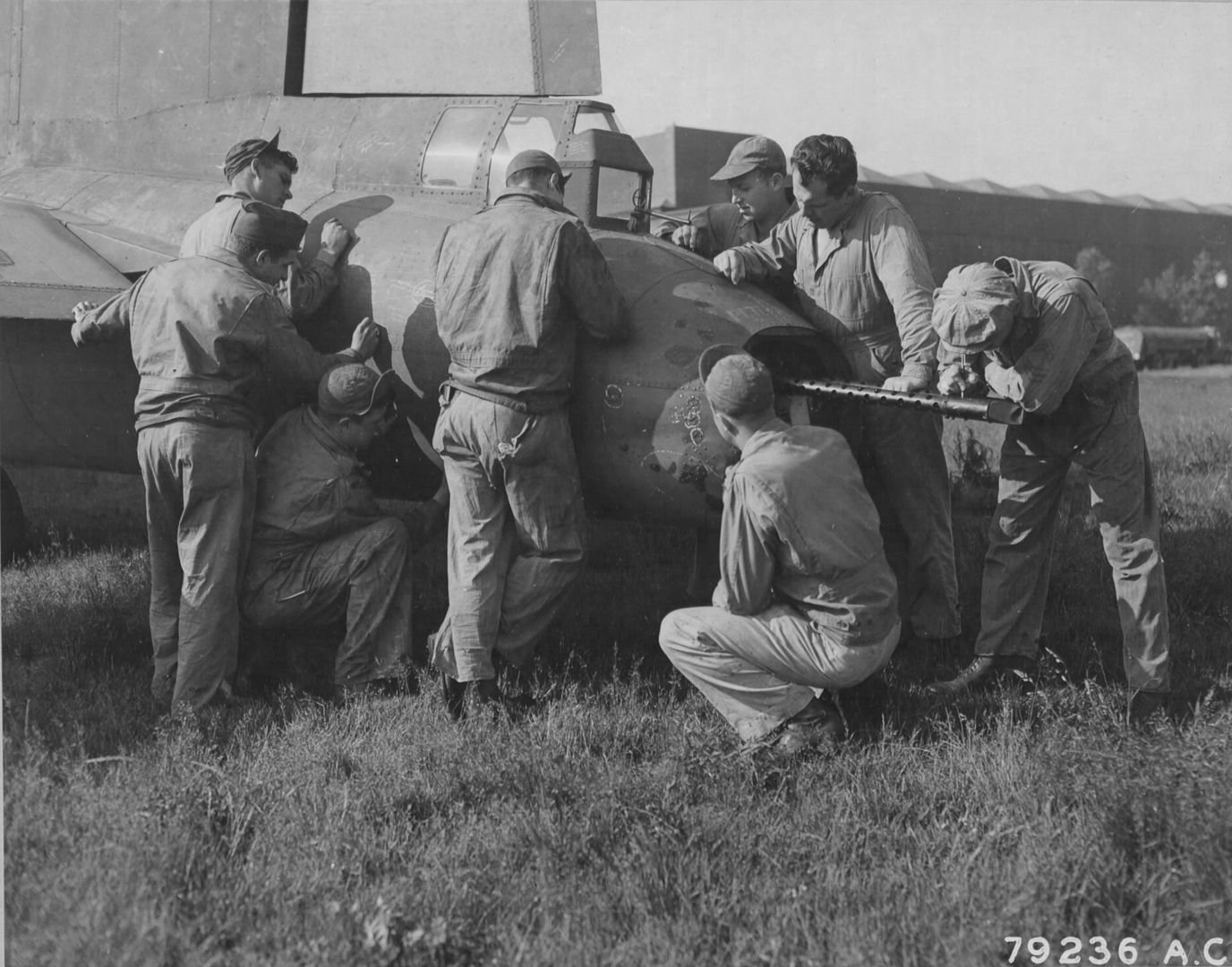
Capt. Robert K. Morgan pilot of the Boeing B-17 Memphis Belle receives the Distinguished Flying Cross from Brig. General H.S. Hansell.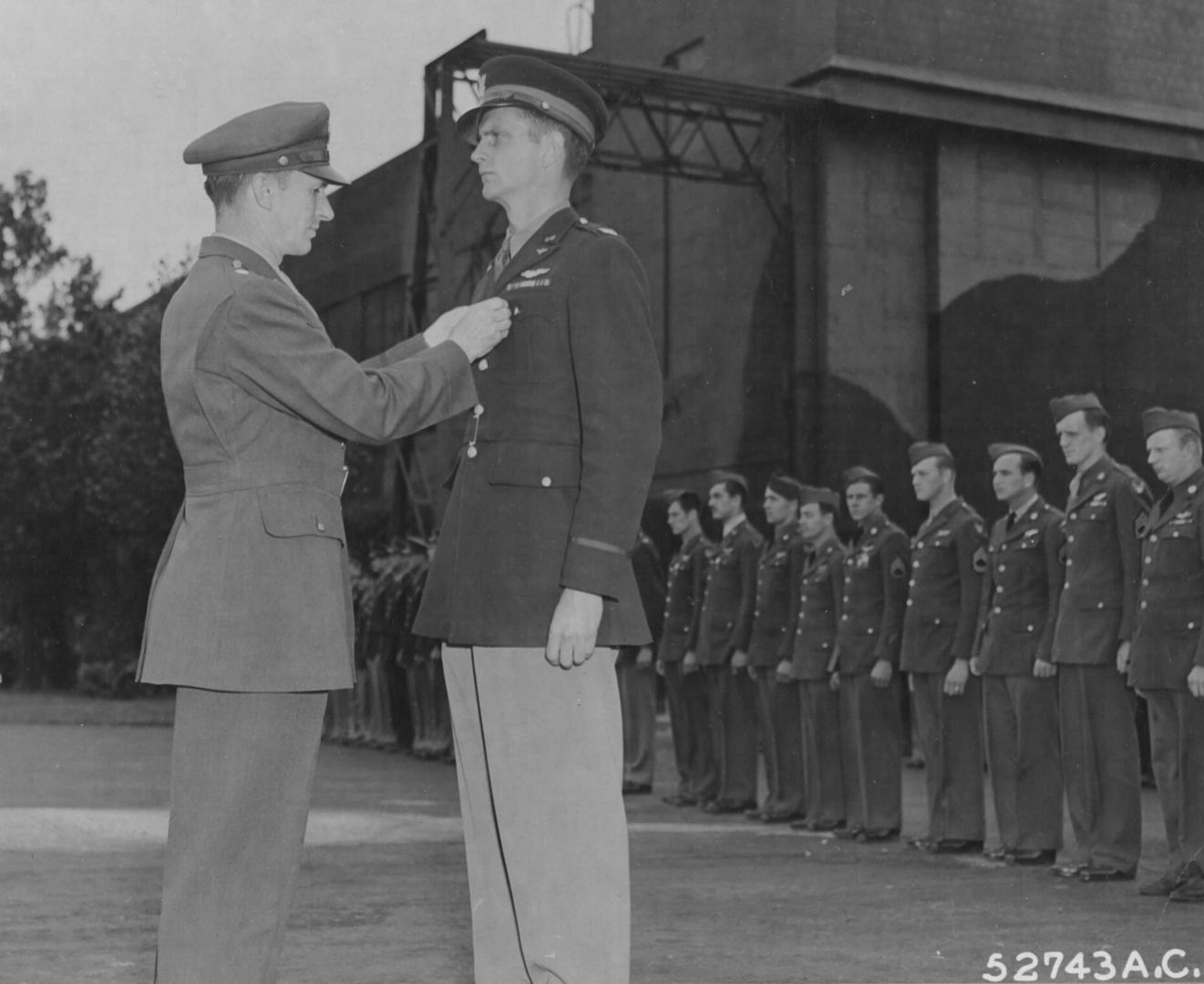
Capt. James H. Verinis co-pilot on the MEMPHIS BELLE with Stuka the planes mascot at an airbase in England. 9 June 1943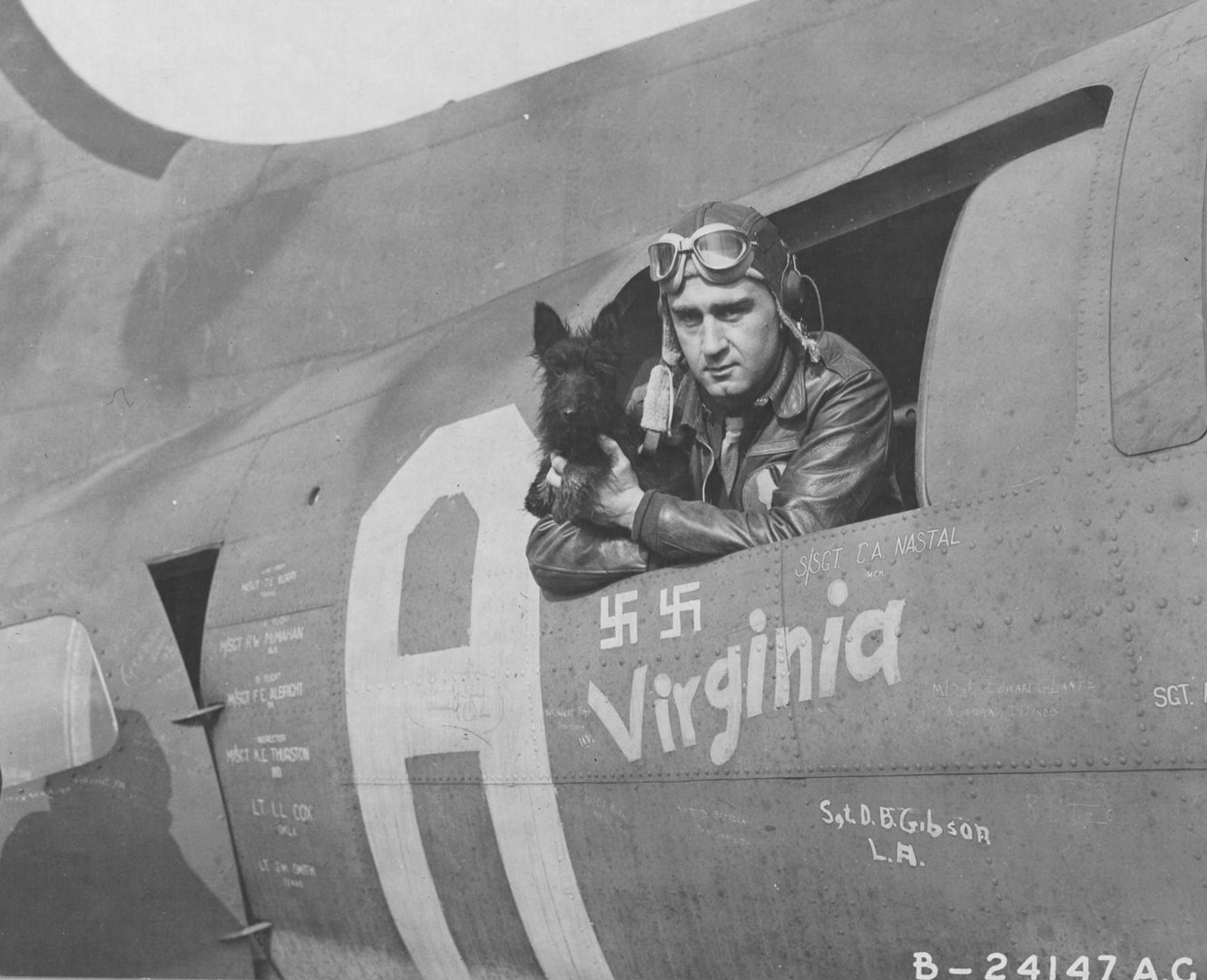
Before the famed Boeing B-17 Memphis Belle left the 8th Air force on its June 1943 trip home fellow airmen and ground crewmen autographed most of its camouflaged sides
Staff Sergeant Casimer Antony Nastal, Crew Member of B-17 Memphis Belle and Staka Looking Out of Waist Gun Window
Members Of One Of The Squadrons At An Airbase In England Bid Farewell To Capt. Robert K. Morgan Of Asheville North Carolina Pilot Of The Boeing B-17 The Memphis Belle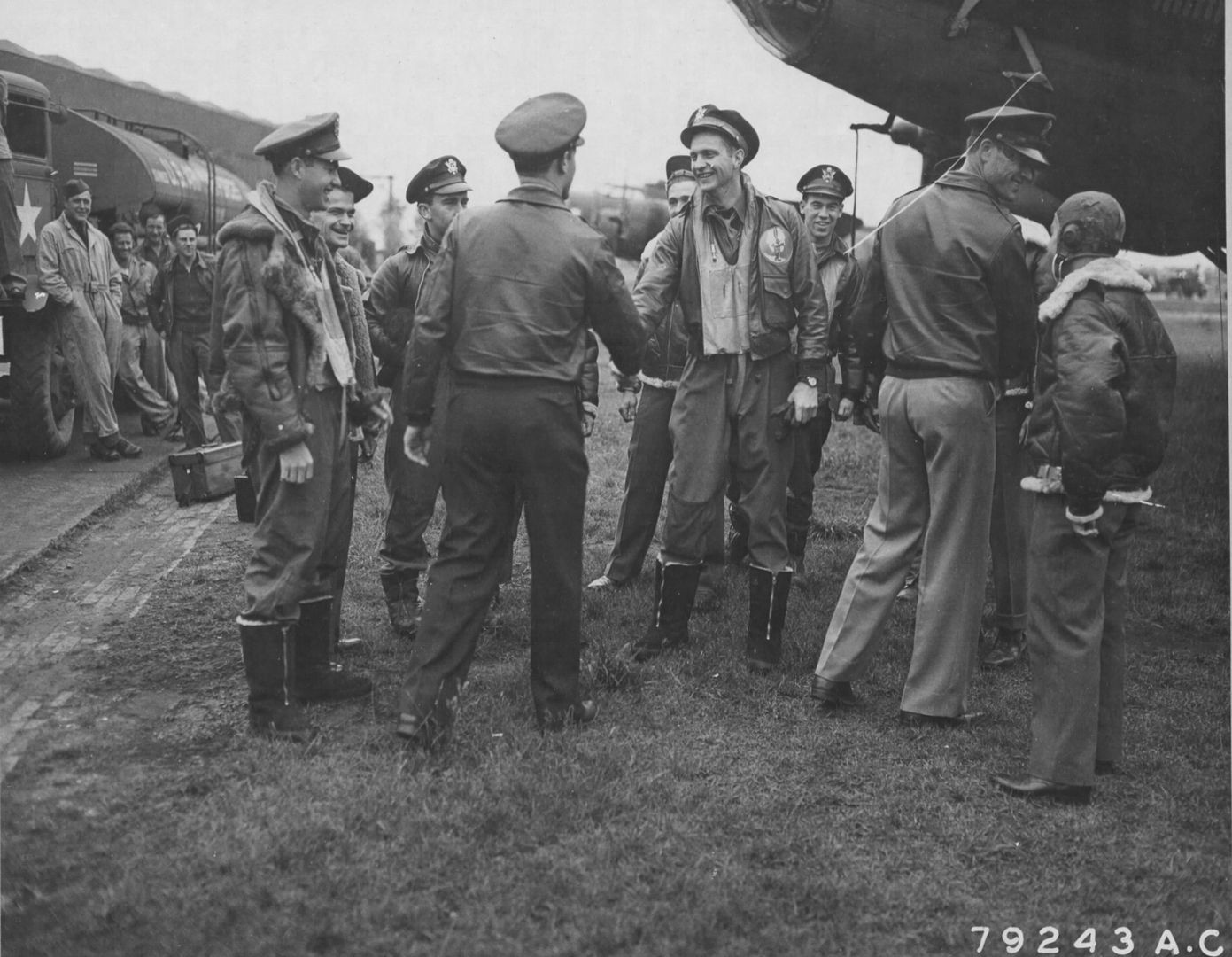
King George of England talks with high American Army officers during a visit to an Eighth Air force base to inspect the crew of the Memphis Belle famed Boeing B-17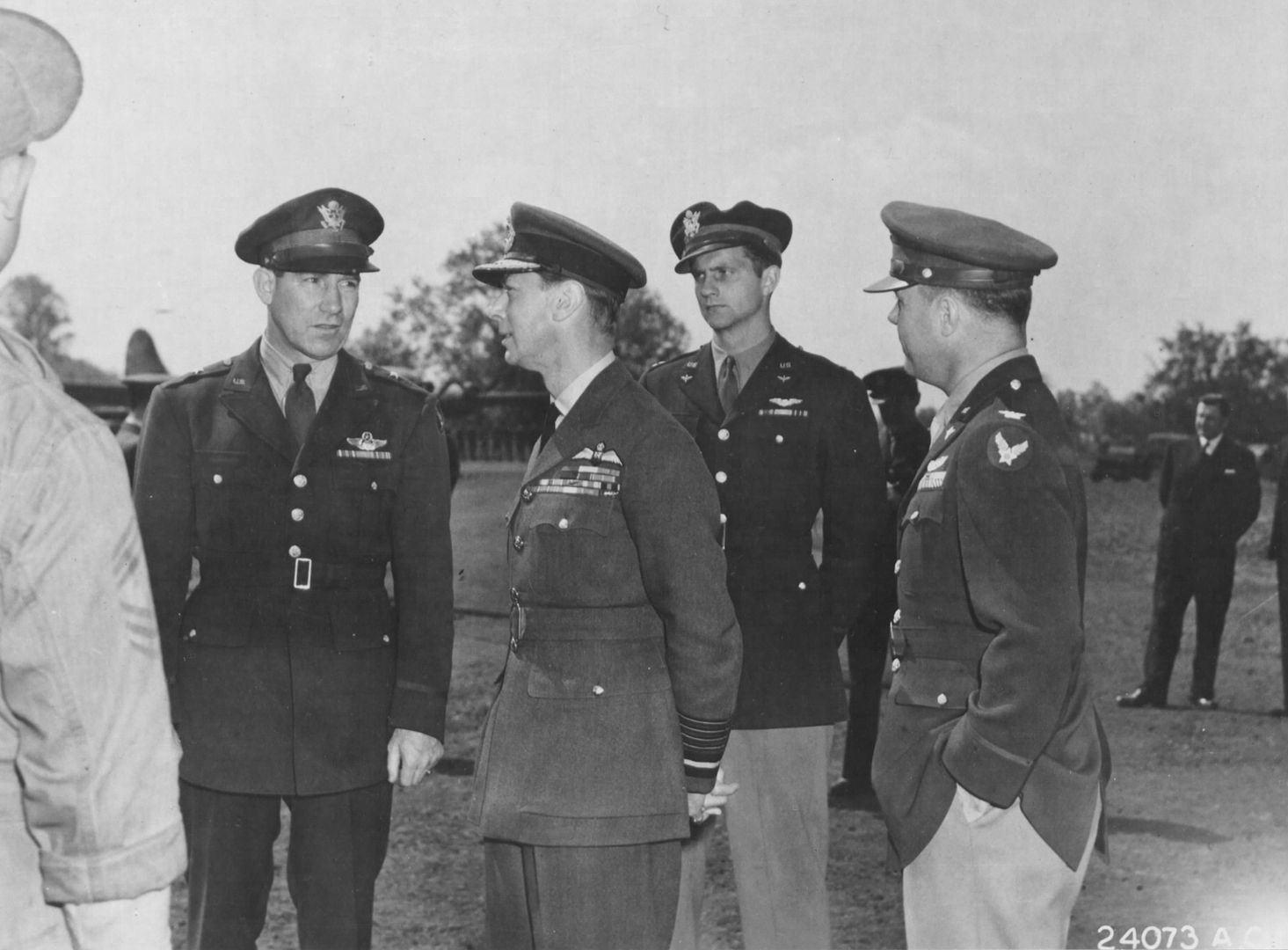
King and Queen of Great Britain - George VI in RAF uniform and Queen Elizabeth congragulate The Belle.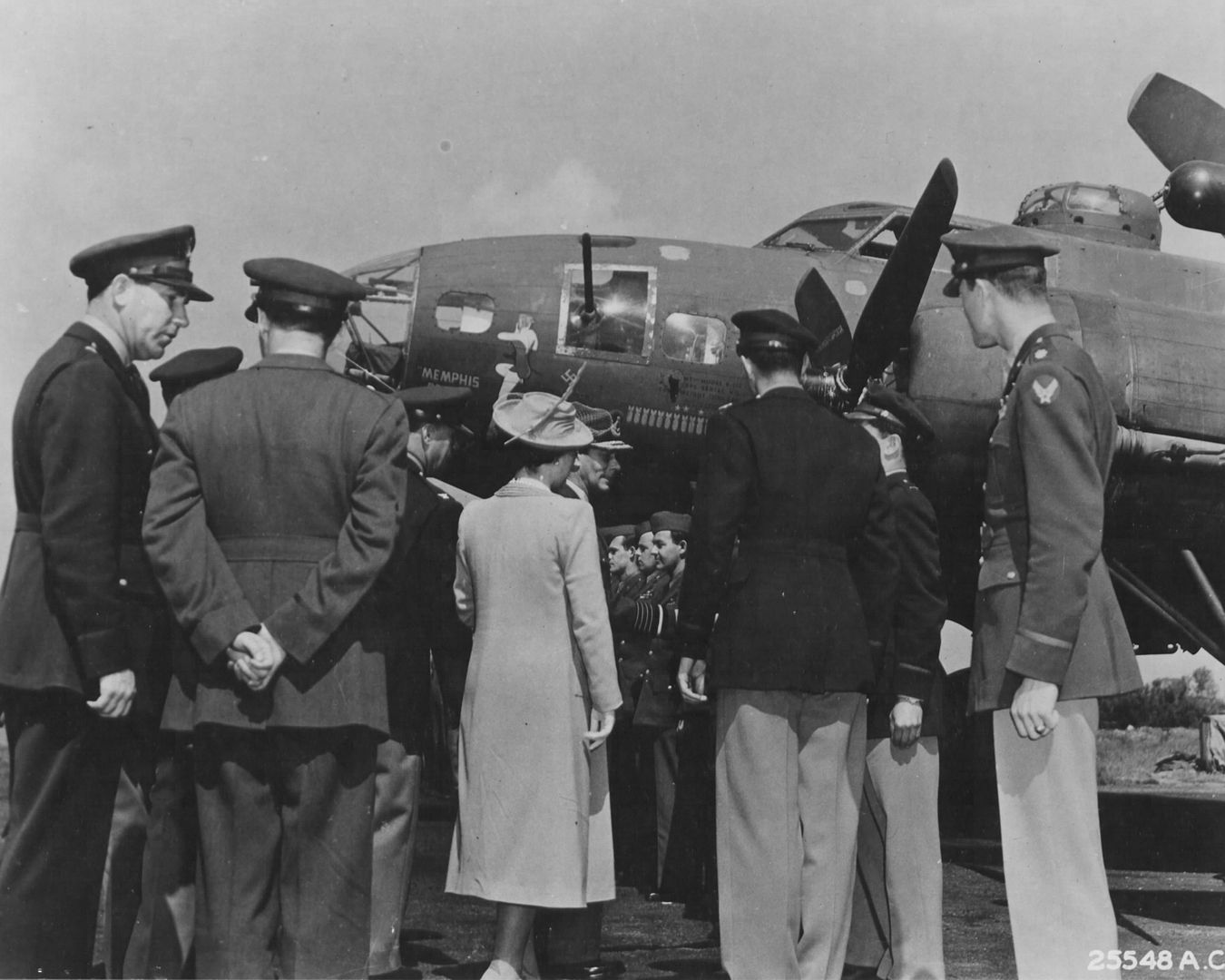
Lt. General Jacob L. Devers And Major General Ira C. Eaker Wishing The Crew Of The Boeing B-17 Memphis Belle Good Luck On Their Trip To The States.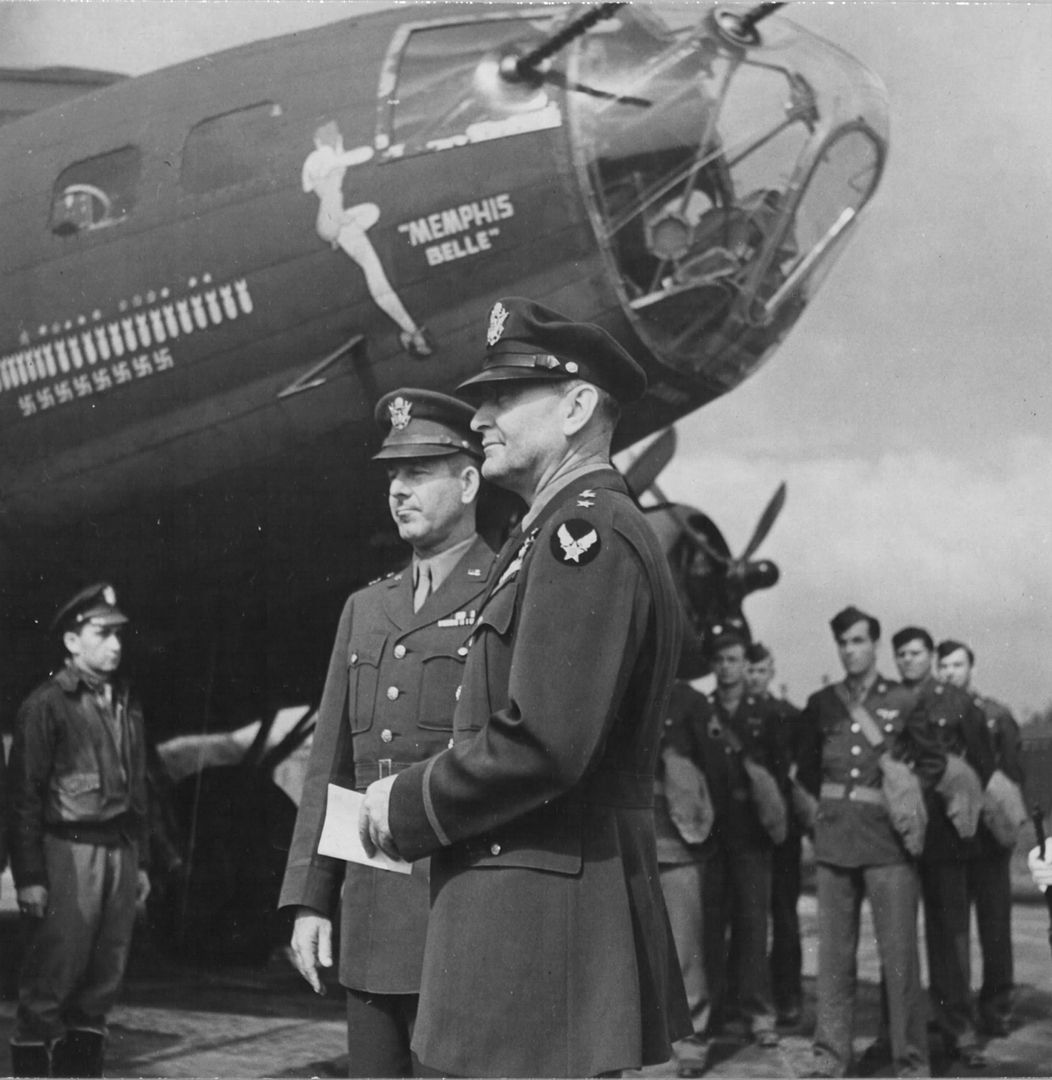
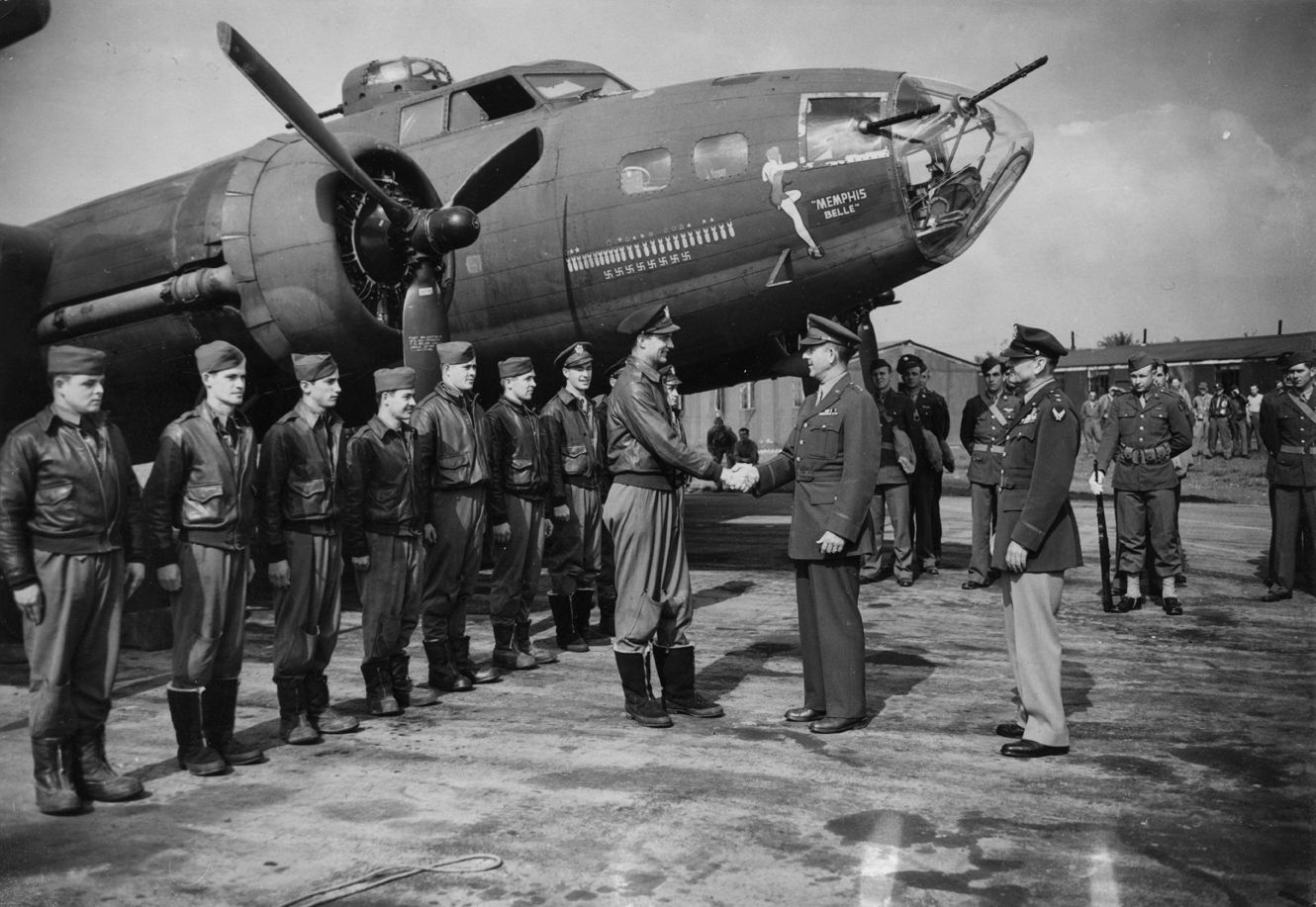

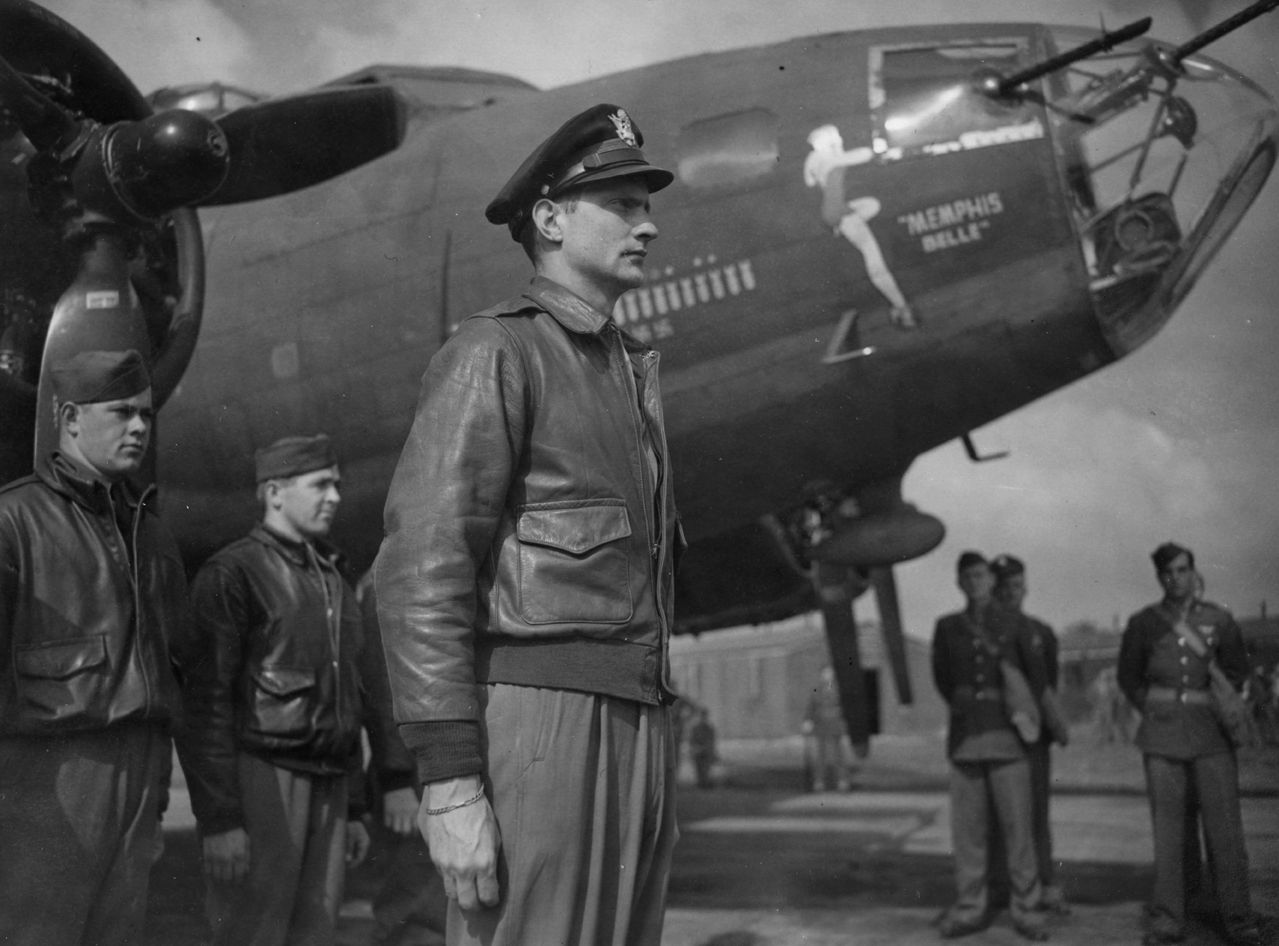

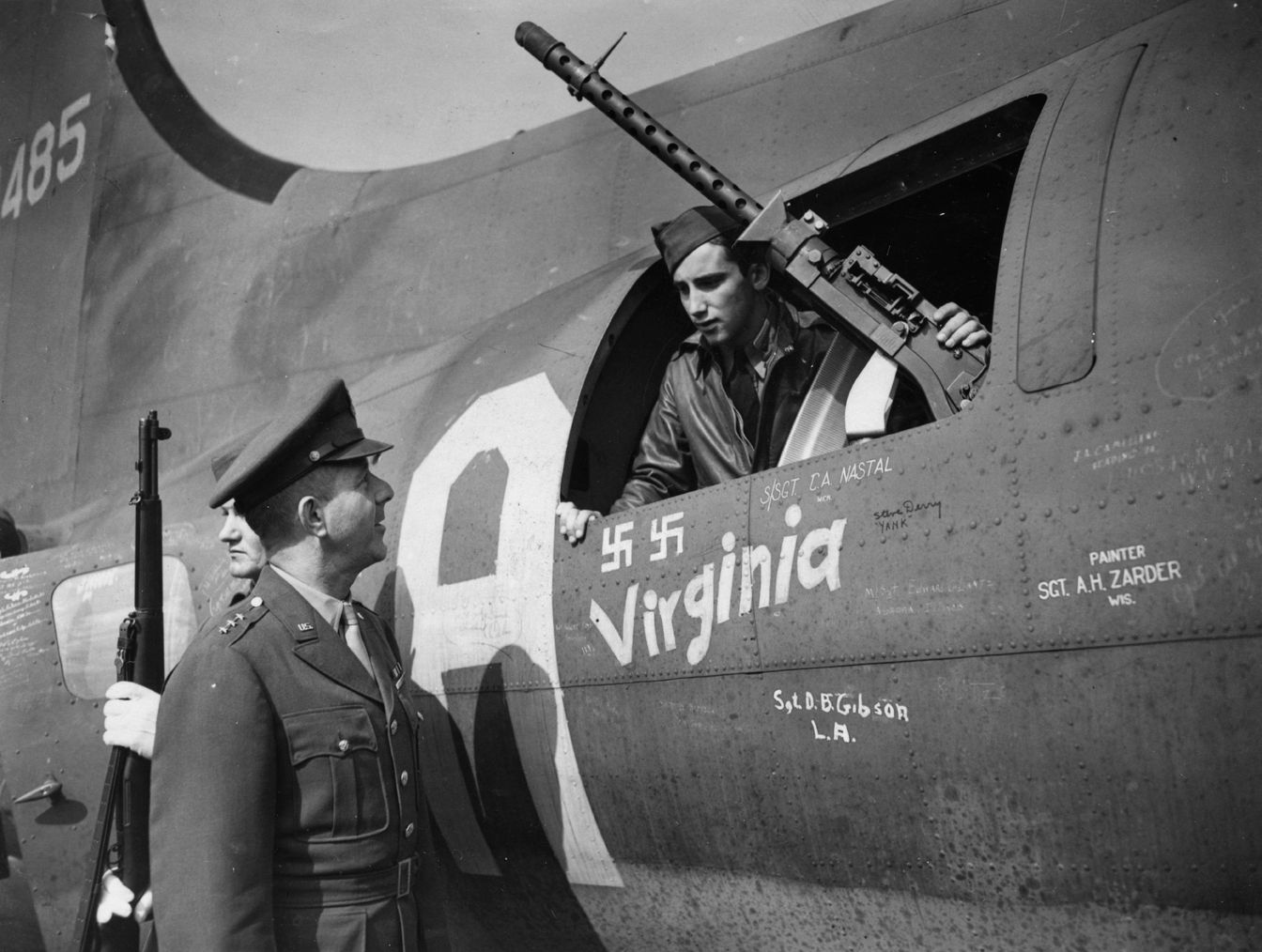

The Escort Ship which accompanied the Memphis Belle on her way home to America after 25 operational flights.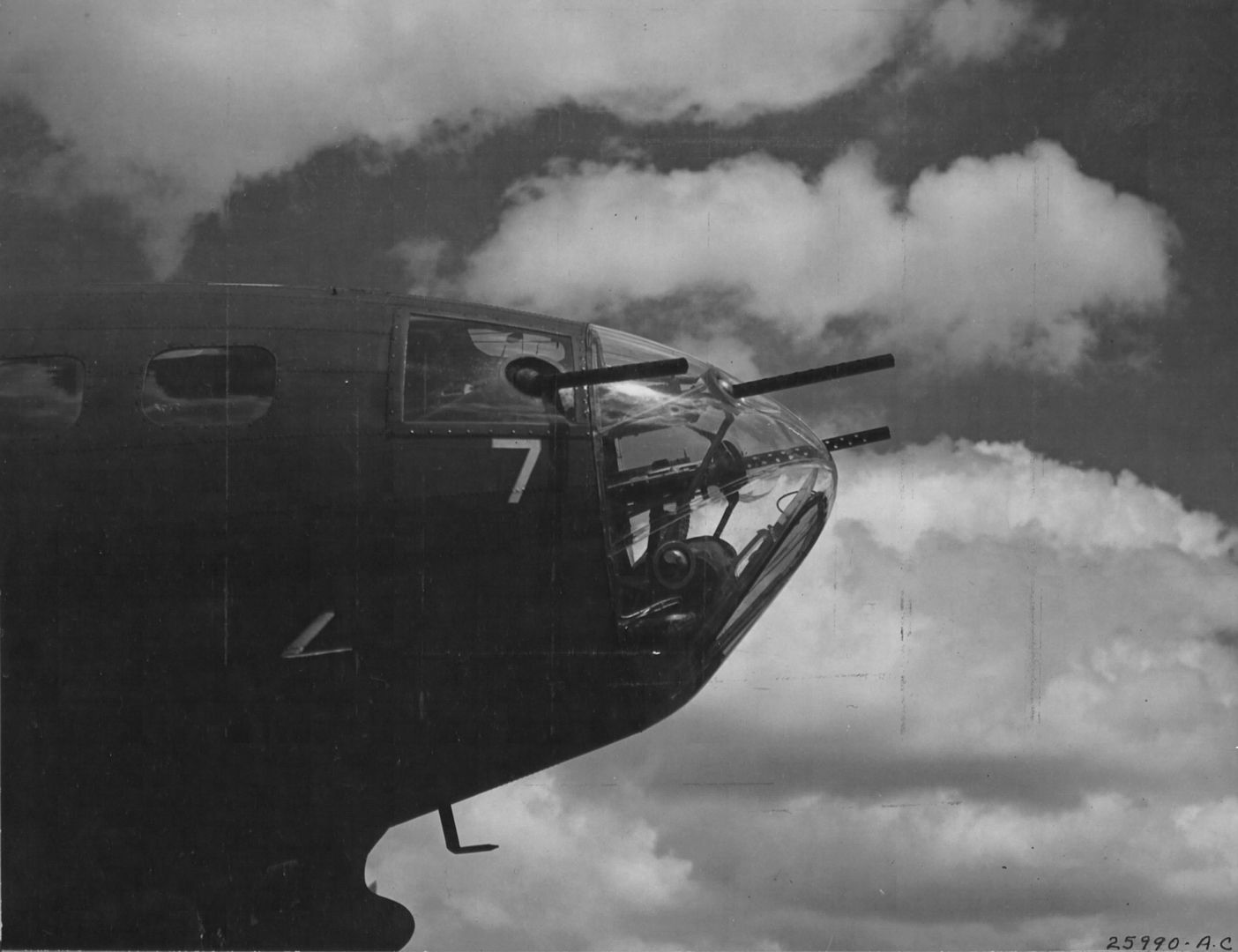
Boeing B-17 THE MEMPHIS BELLE is pictured on her way back to the United States after completing 25 missions from an airbase in England. 9 June 1943

The Belles cockpit.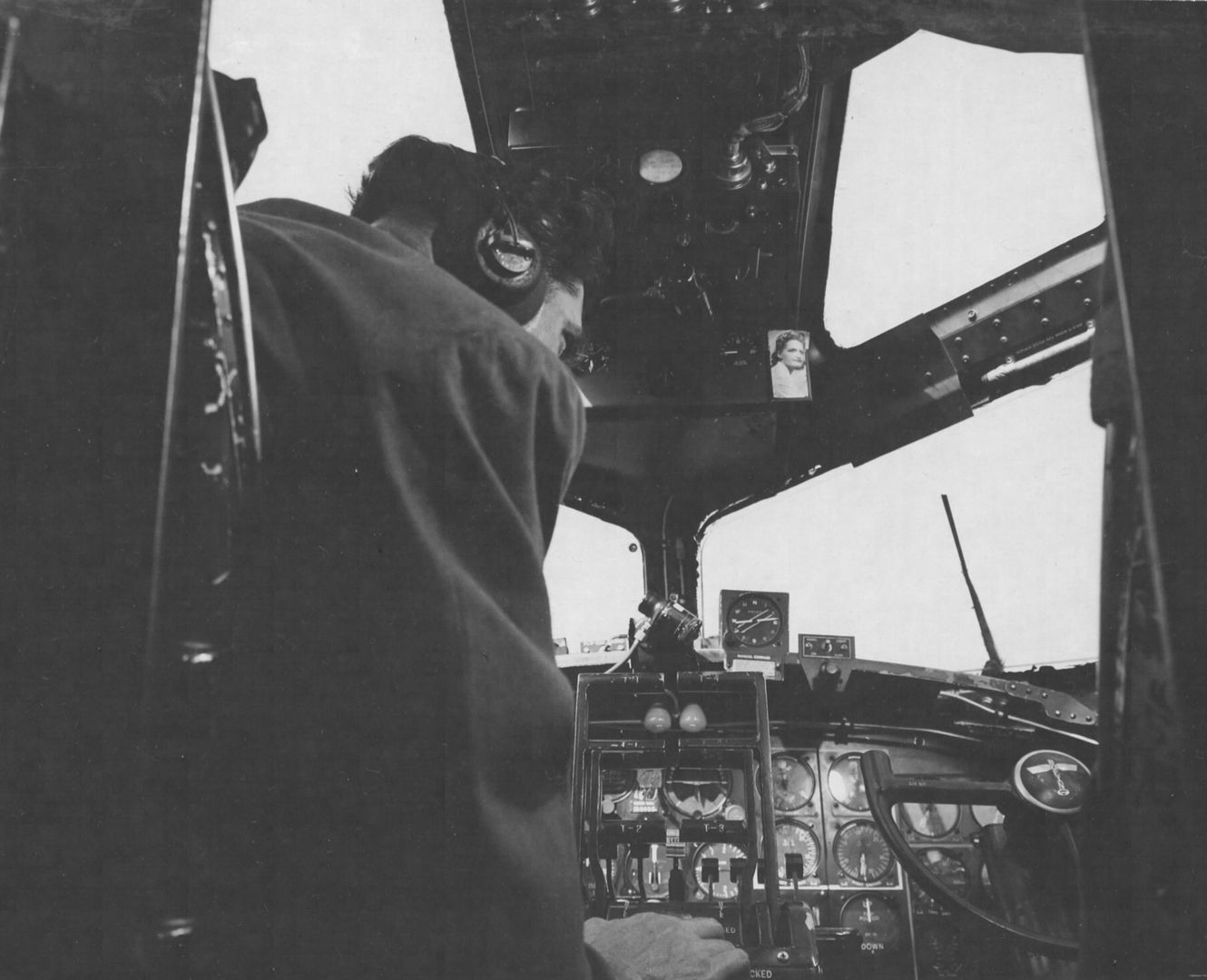
Memphis Belle has flown back from England where during almost eight months it has taken part in 25 missions -Washington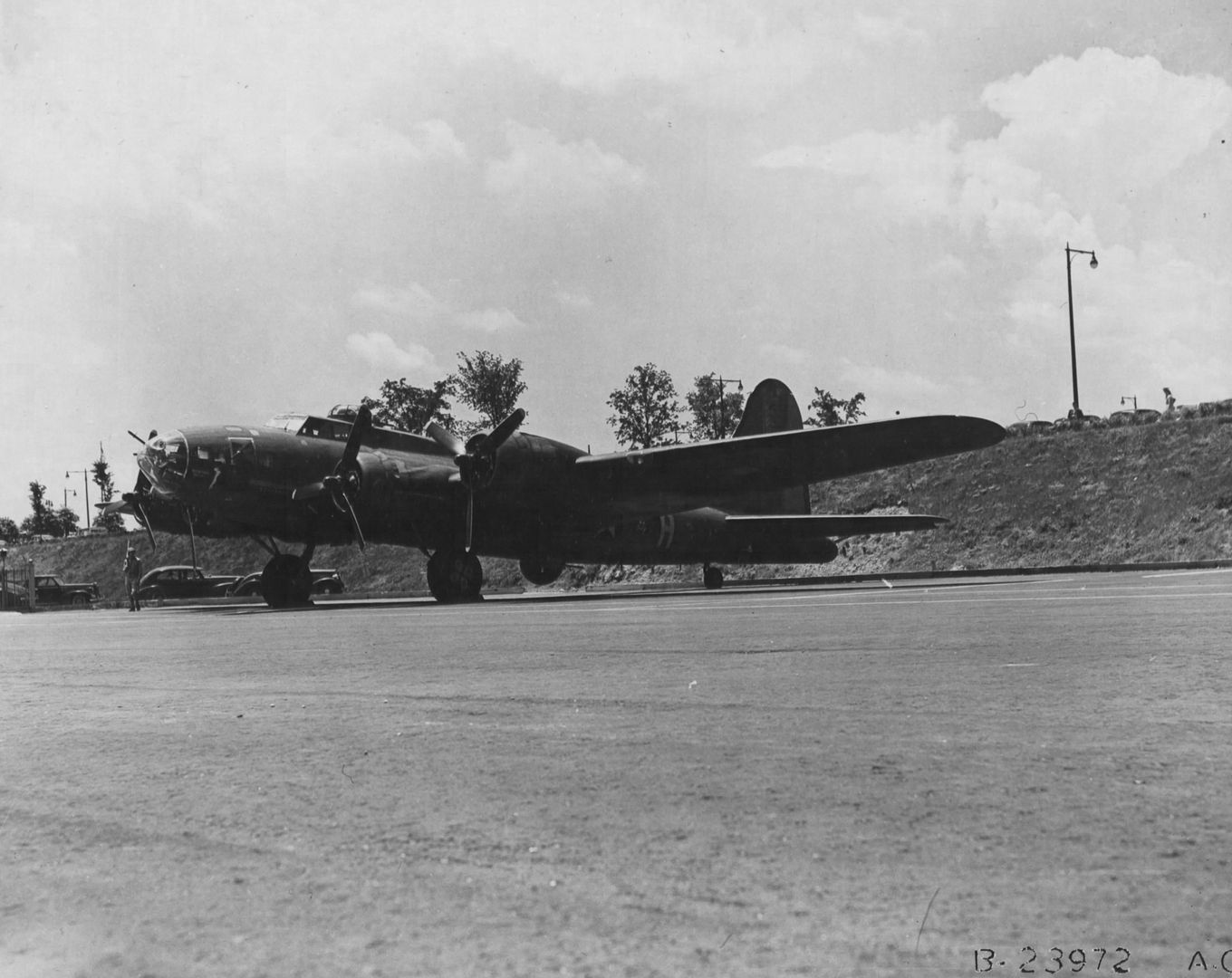
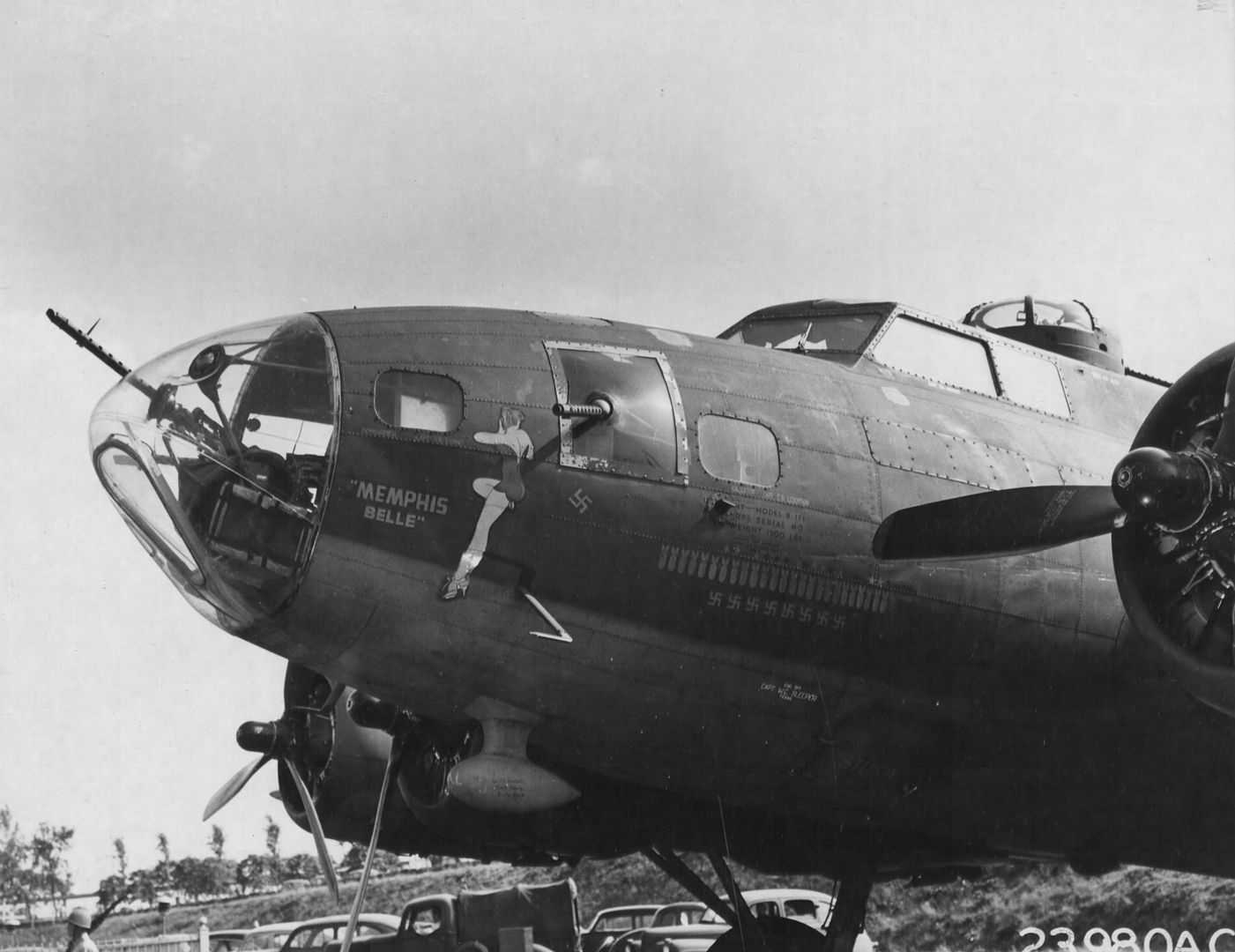


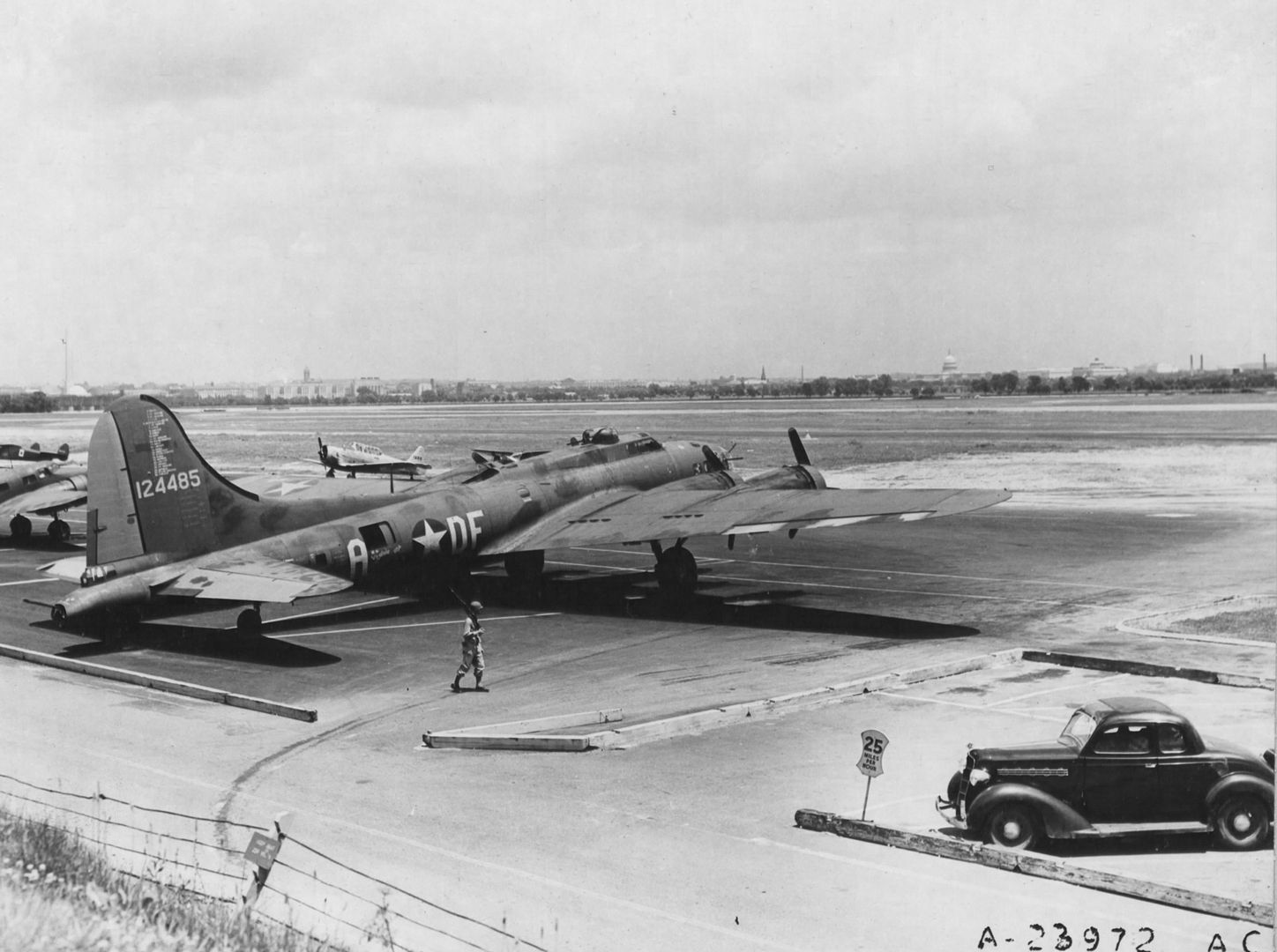
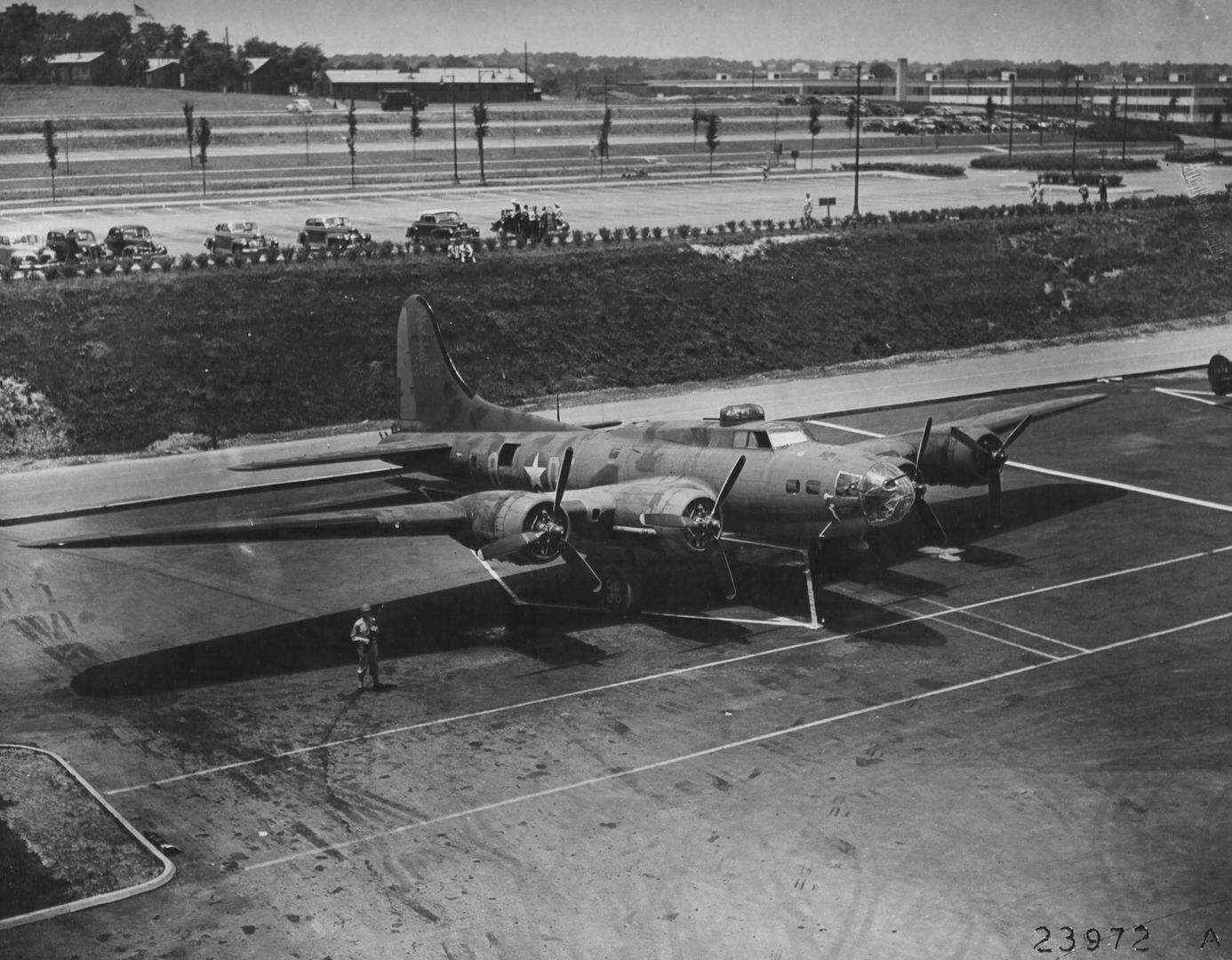
B-17 Flying Fortress serial number 41-24485 nicknamed Memphis Belle of the 91st Bomb Group at Wright Field.
The Memphis Belle on a War Bond campaign at Patterson Field.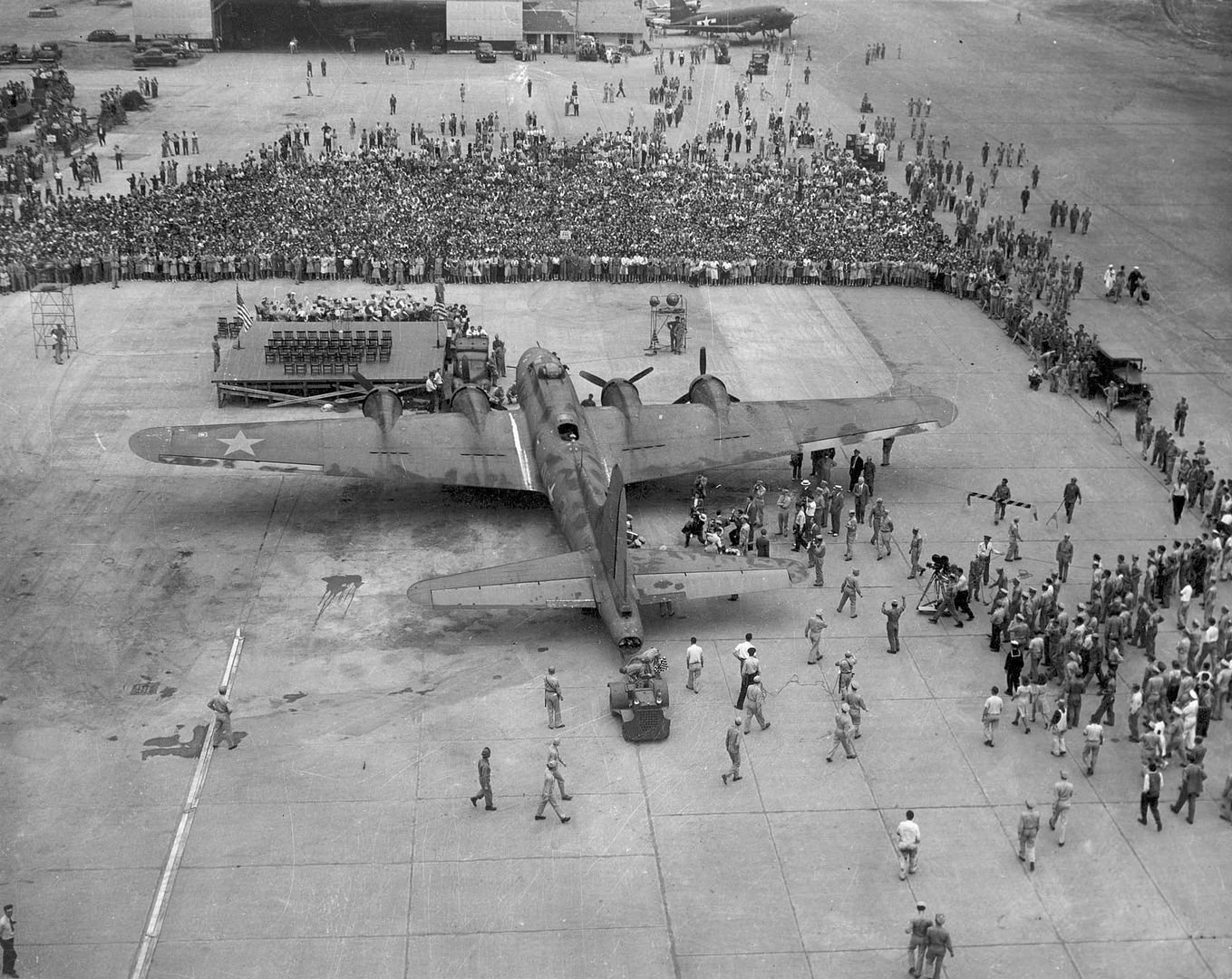
Fans adoring the aircraft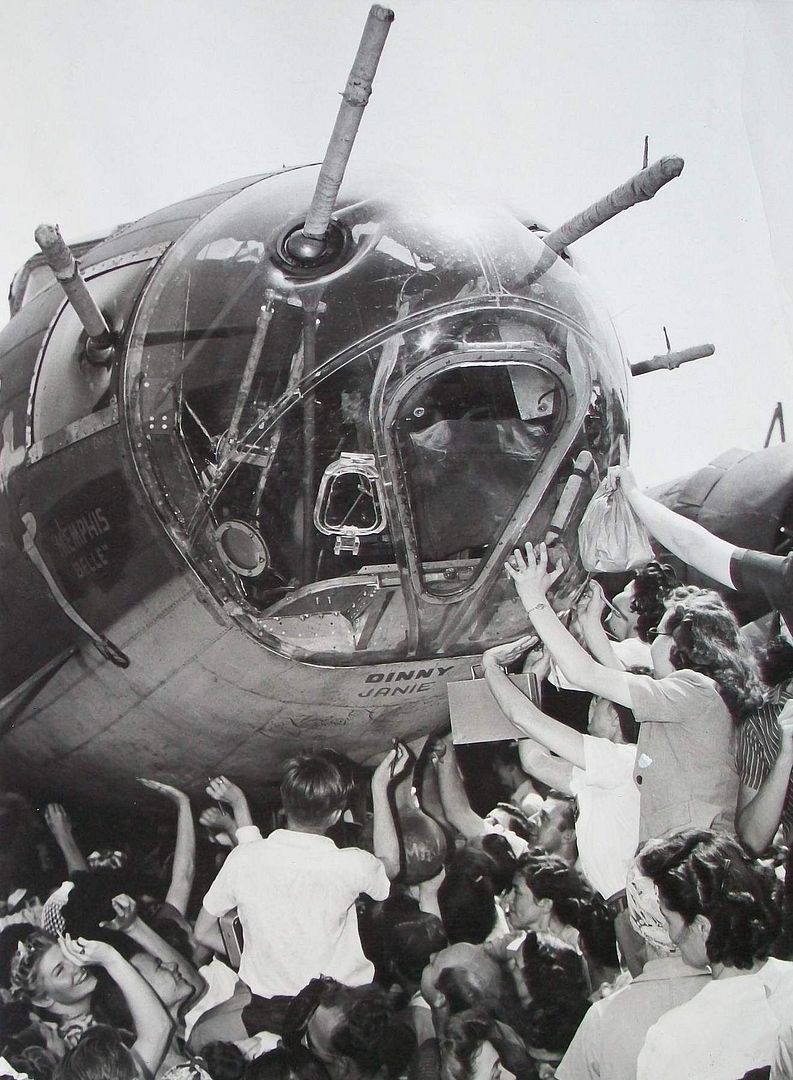
Members of the crew of the Memphis Belle pictured with Assistant Secretary of War Robert Patterson and General Henry H. Arnold.
Crew Of The Boeing B-17 Memphis Belle At Laredo Aaf Laredo Texas 20 June 1943.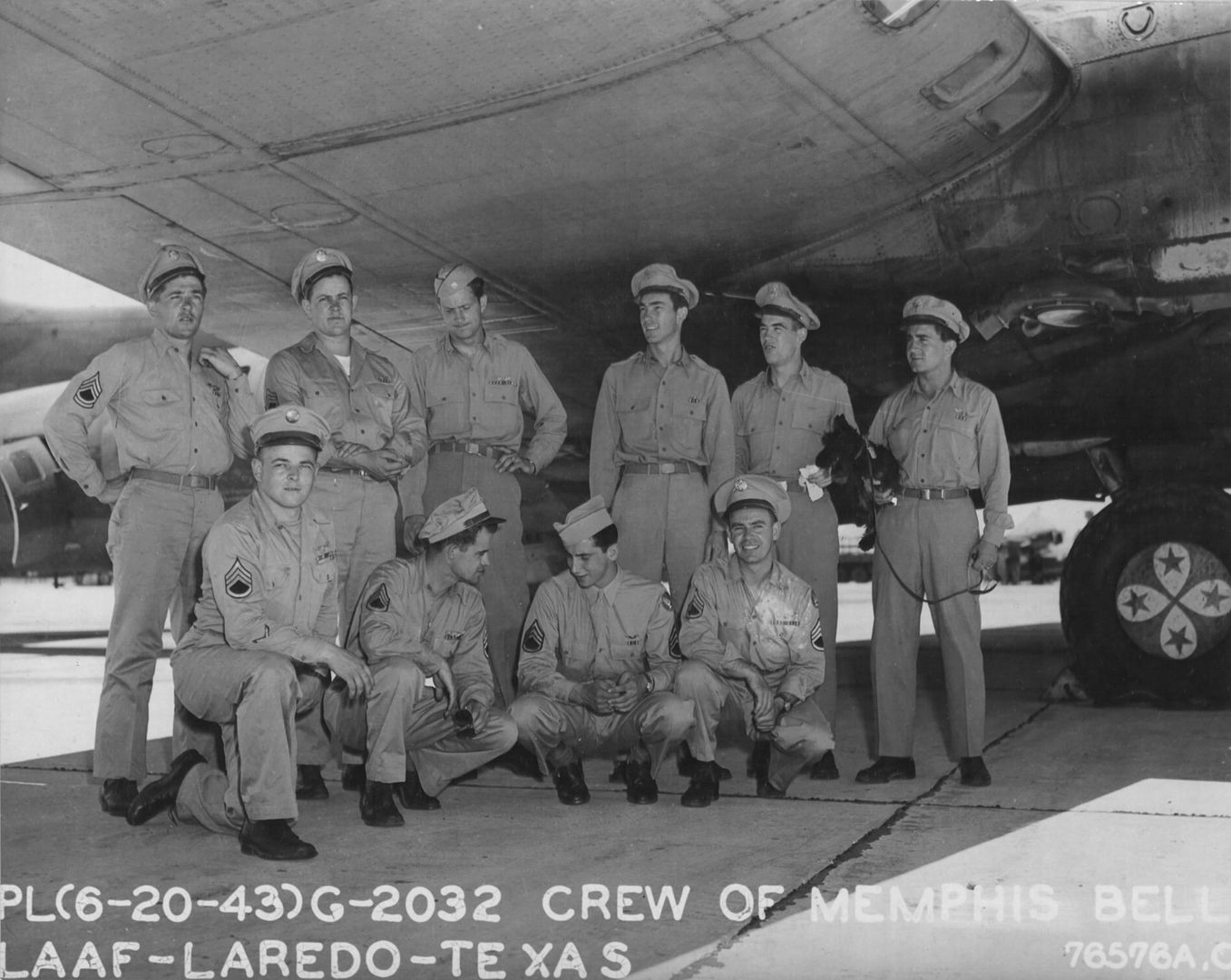
Captain Robert Morgan and the rest of the Memphis Belle crew arrive in Cleveland on a rainy July 7 1943 for three-day publicity visit.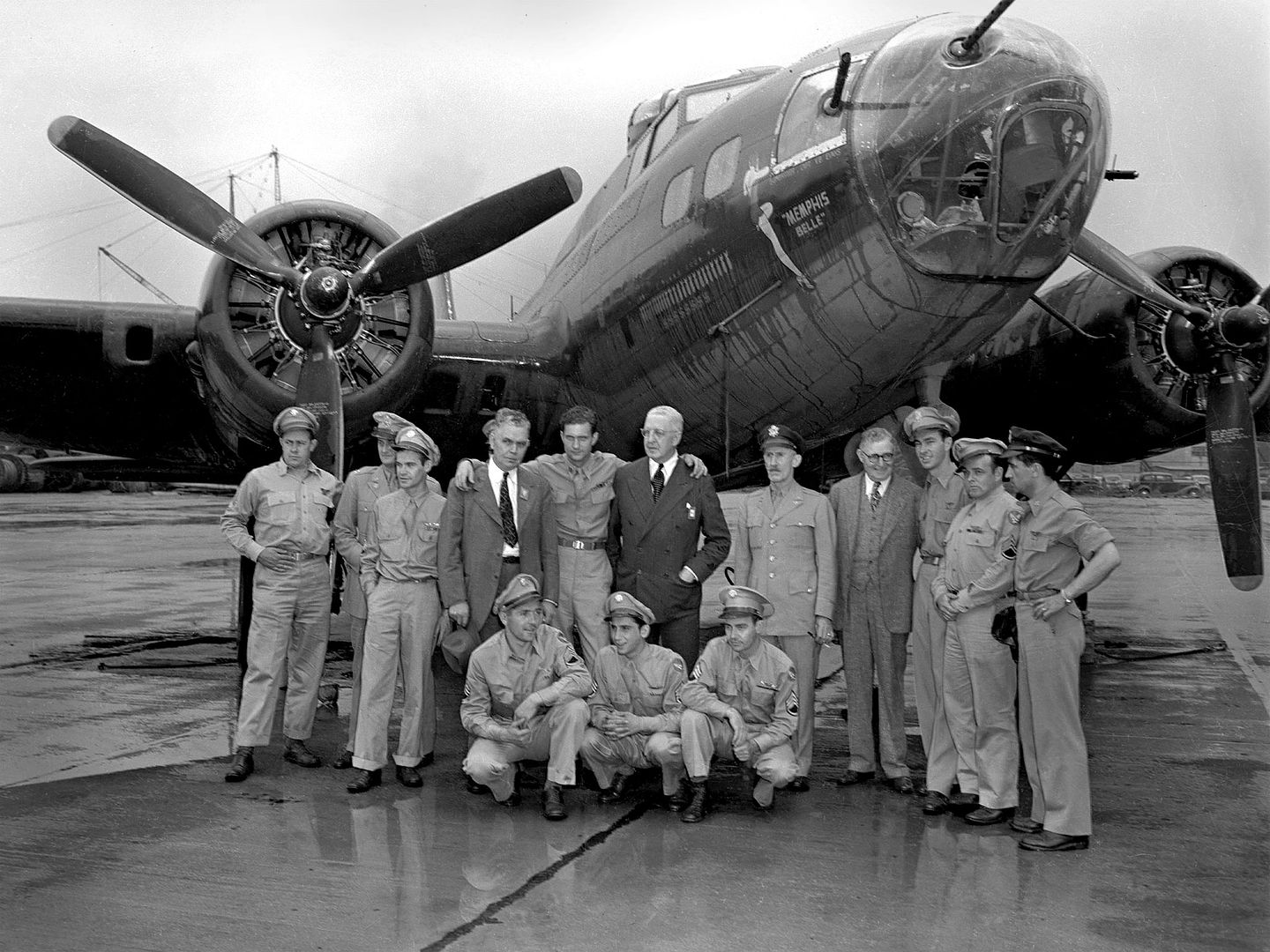
Capt. Robert K. Morgan Biltmore Estates Ashville N.C. pilot of the Boeing B-17 Memphis Belle.
Memphis Belle at the Douglas plant in 1943..jpg?width=1920&height=1080&fit=bounds)
.jpg?width=1920&height=1080&fit=bounds)
Hollywood director William Wyler made three wartime documentaries the most famous of which is The Memphis Belle A Story of a Flying Fortress 1944.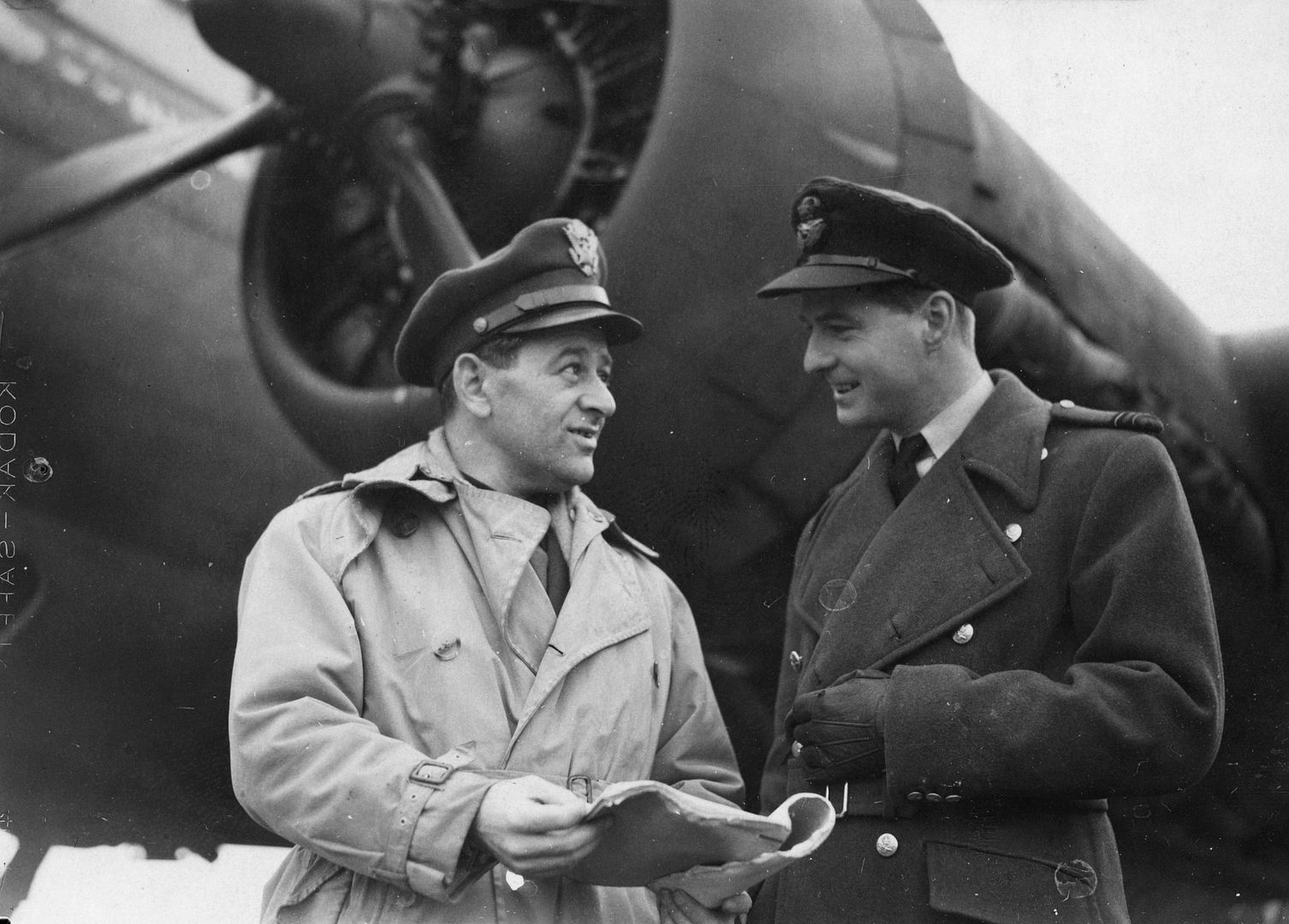
Film Director Major William Wyler looks through the waist gun position of a B-17 Flying Fortress DF-B of the 91st Bomb Group during the filming of Memphis Belle.
Filmmaker Major William Wyler with his production team whilst filiming Memphis Belle A Story of a Flying Fortress at Bassingbourn.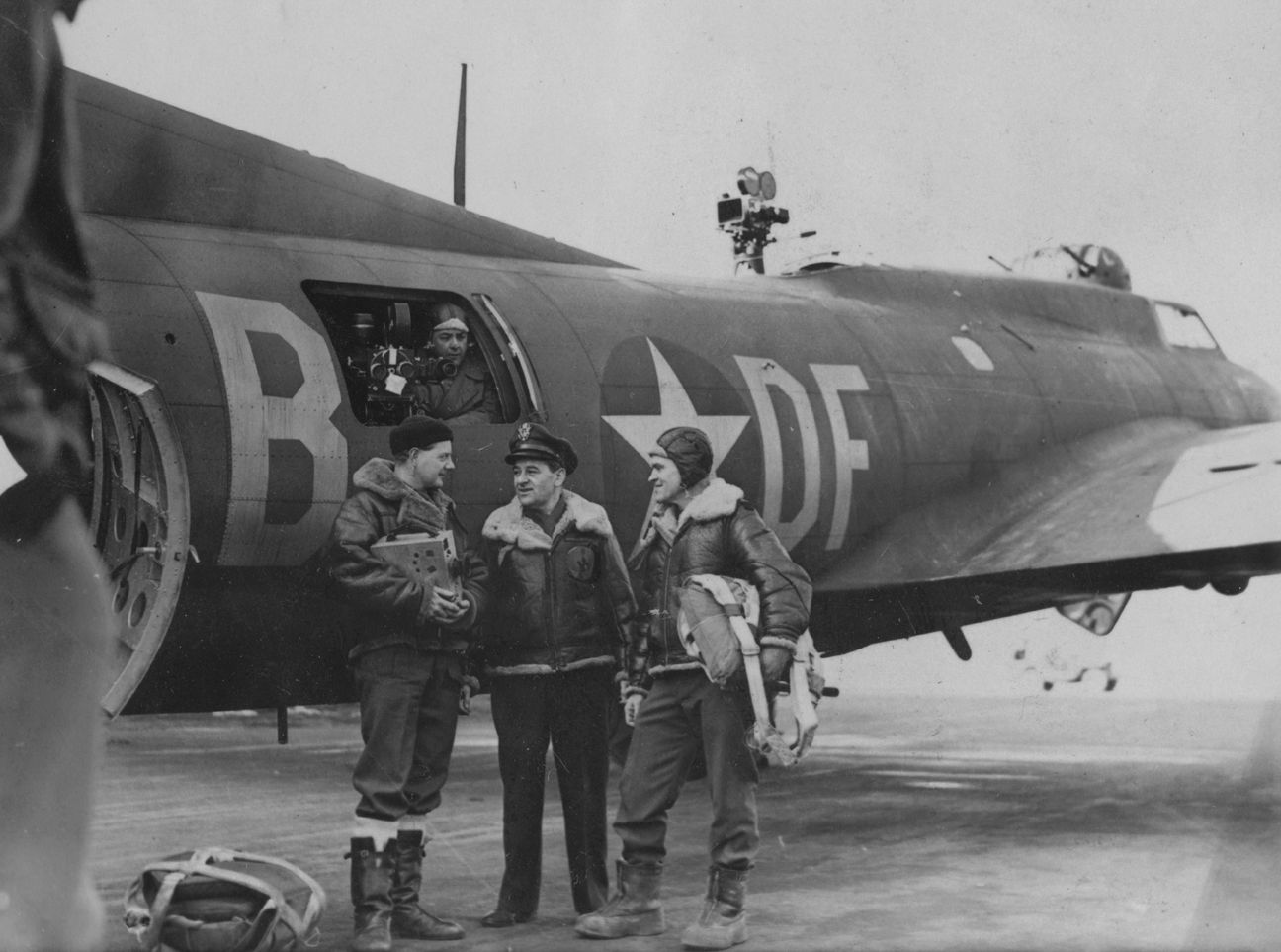
Post a reply
- Go to Previous topic
- Go to Next topic
- Go to Welcome
- Go to Introduce Yourself
- Go to General Discussion
- Go to Screenshots, Images and Videos
- Go to Off topic
- Go to Works in Progress
- Go to Skinning Tips / Tutorials
- Go to Skin Requests
- Go to IJAAF Library
- Go to Luftwaffe Library
- Go to RAF Library
- Go to USAAF / USN Library
- Go to Misc Library
- Go to The Ops Room
- Go to Made in Germany
- Go to Campaigns and Missions
- Go to Works in Progress
- Go to Juri's Air-Raid Shelter
- Go to Campaigns and Missions
- Go to Works in Progress
- Go to Skinpacks
- Go to External Projects Discussion
- Go to Books & Resources
